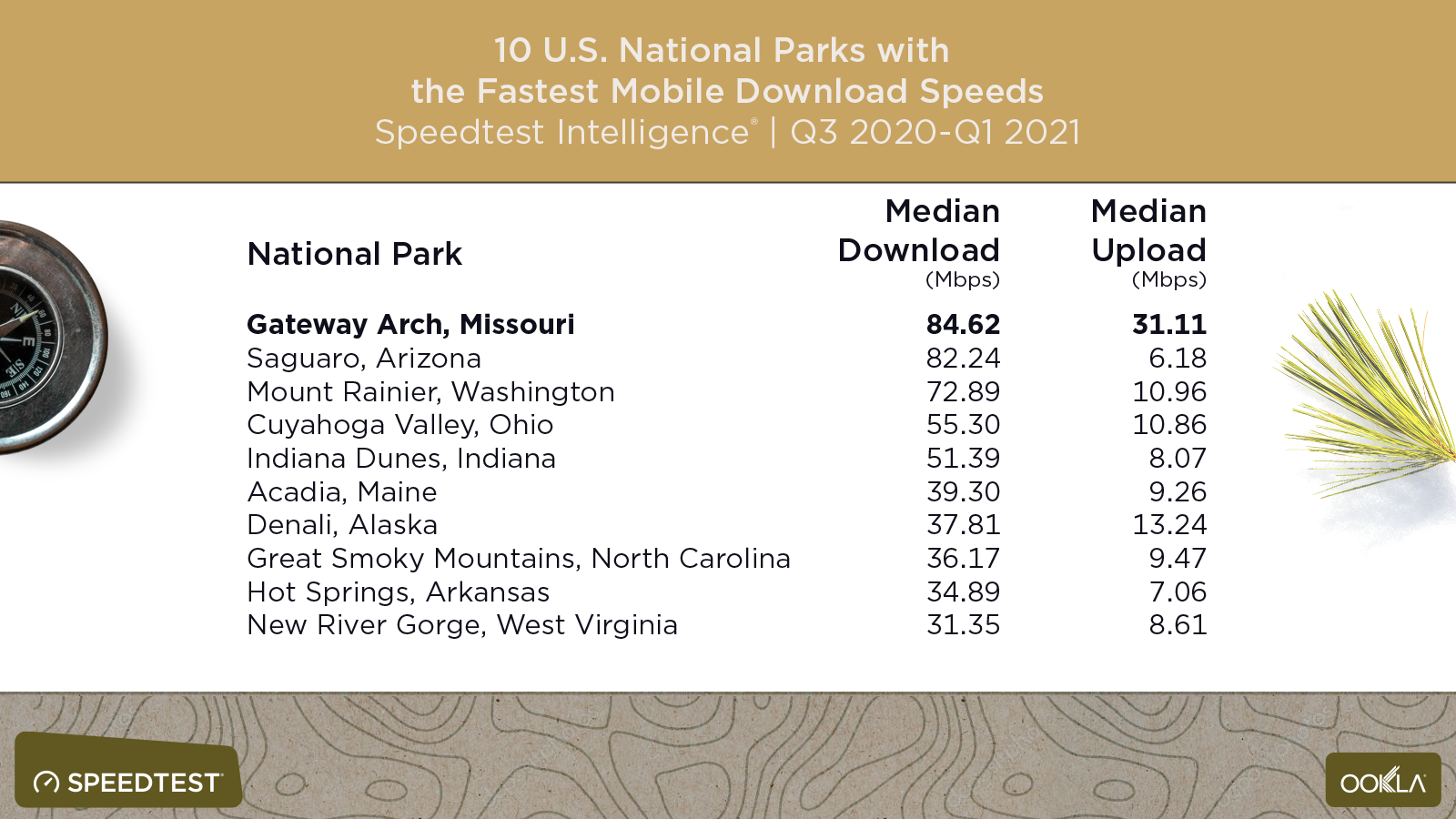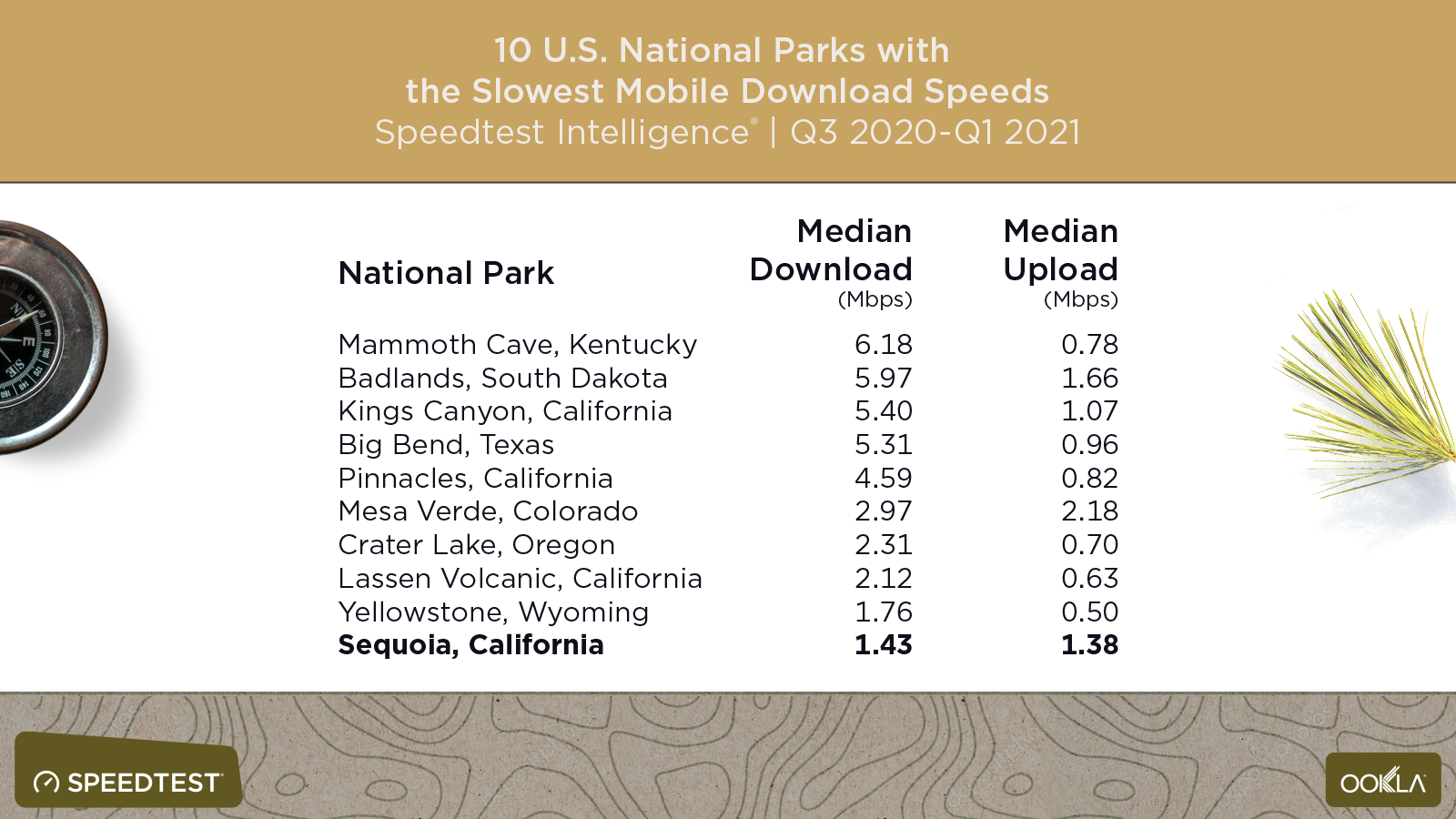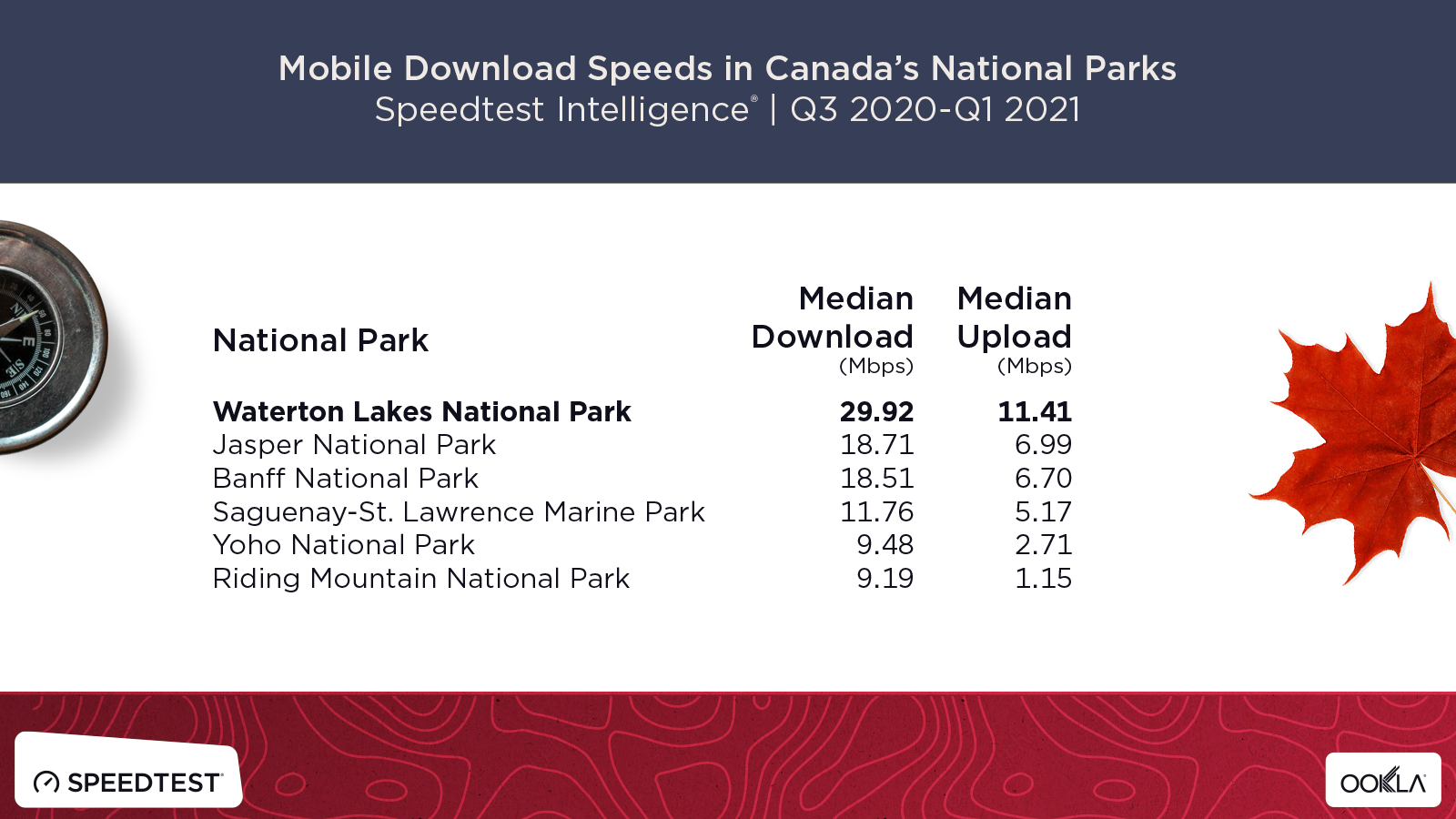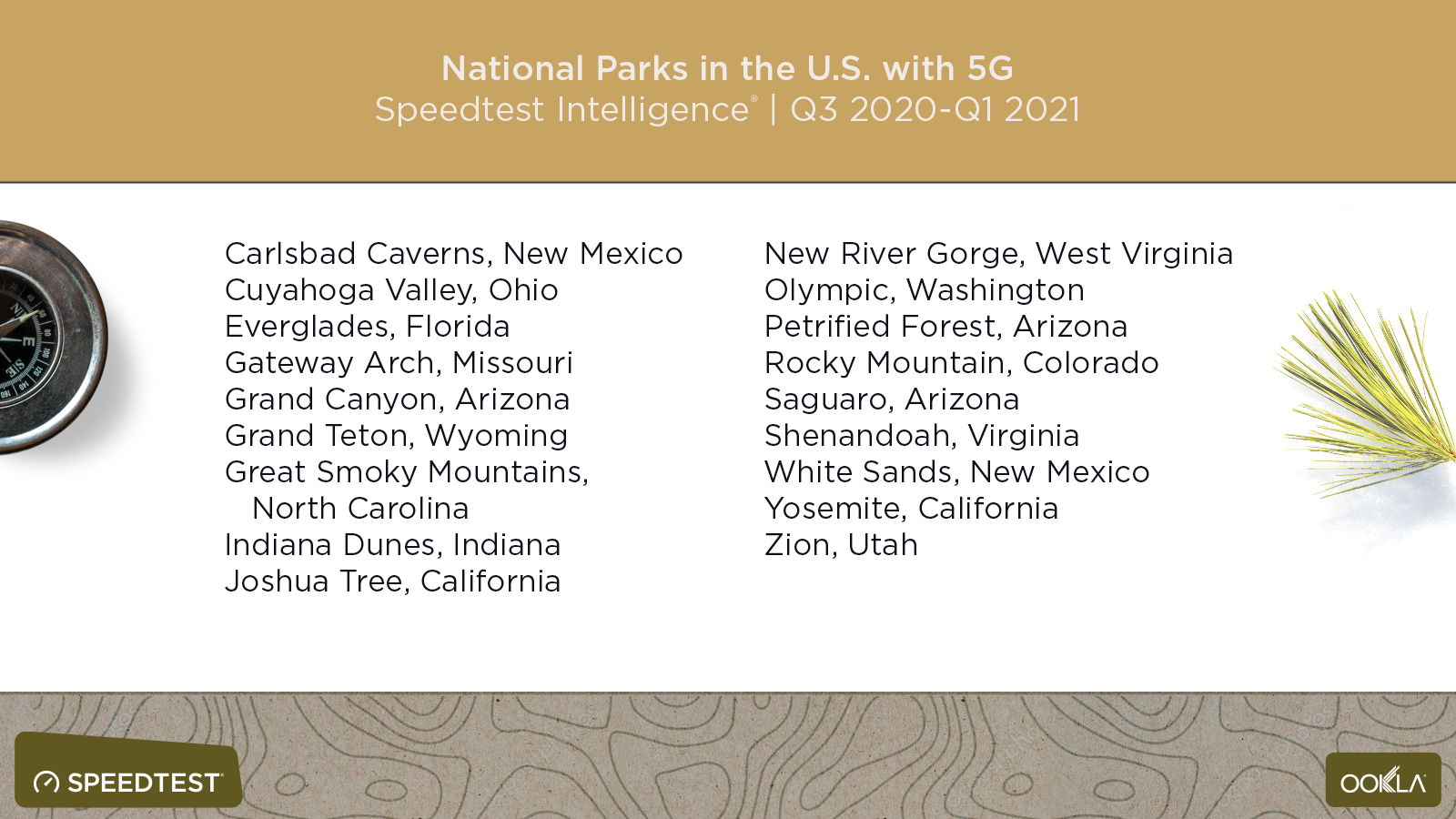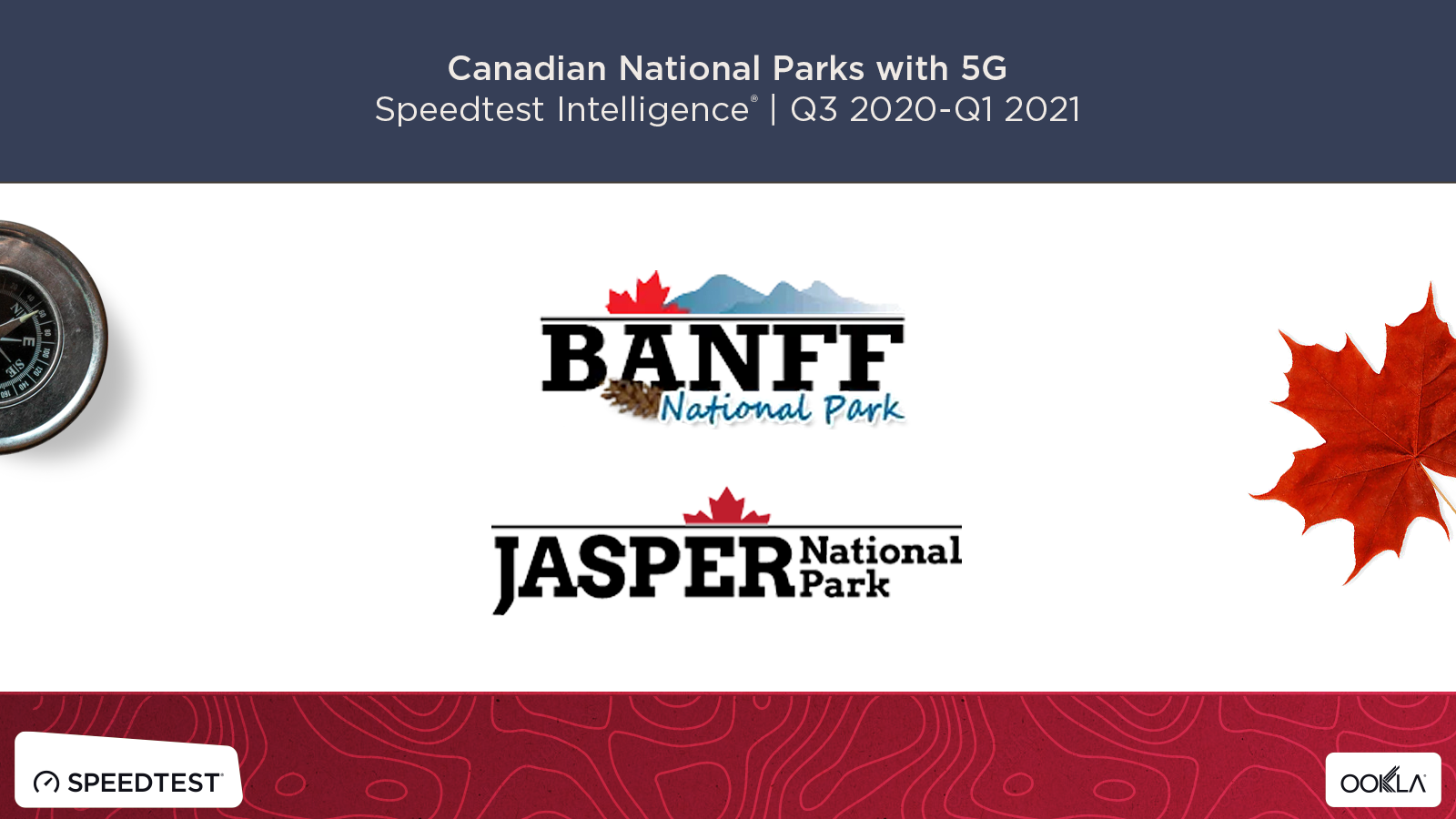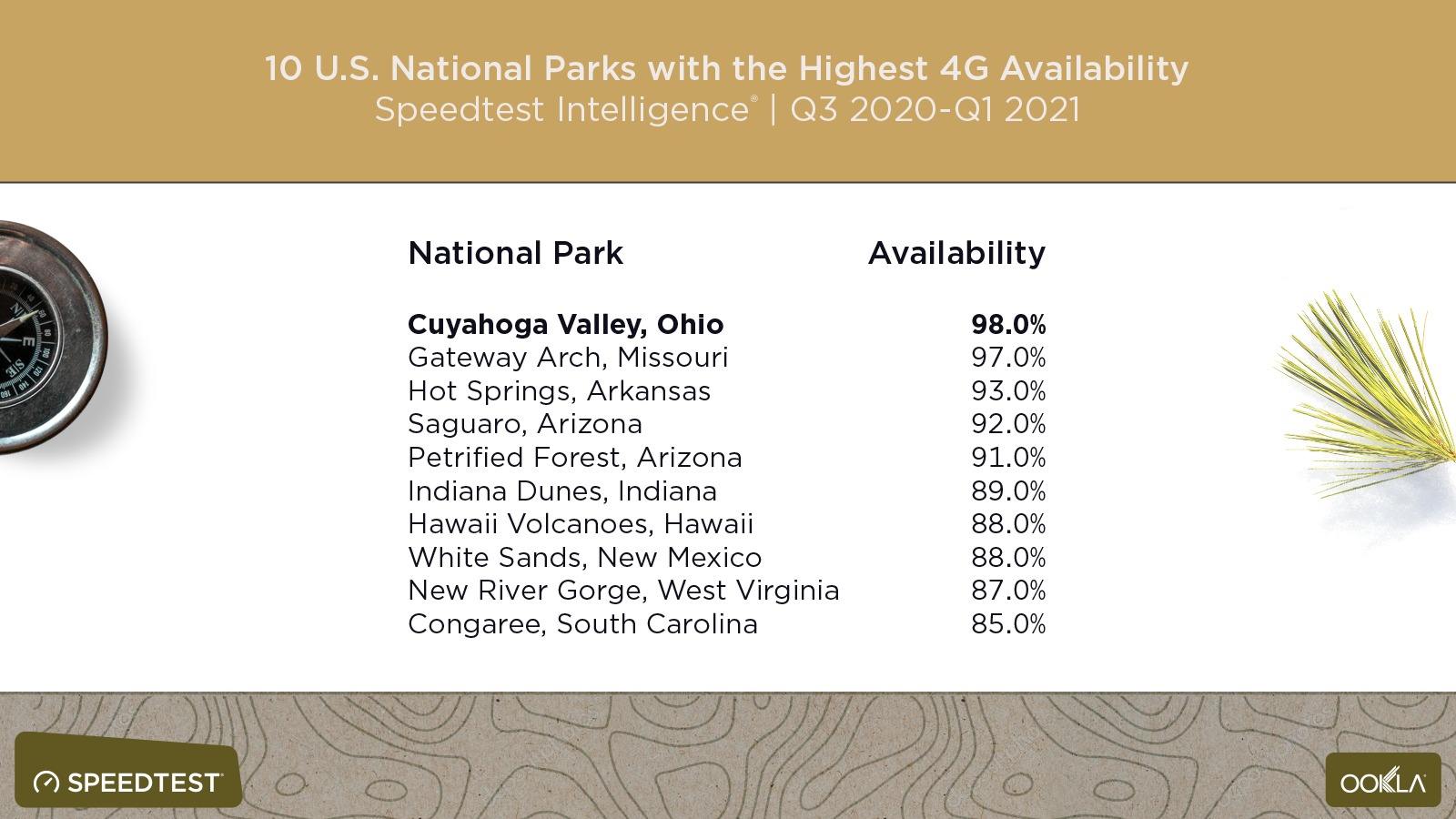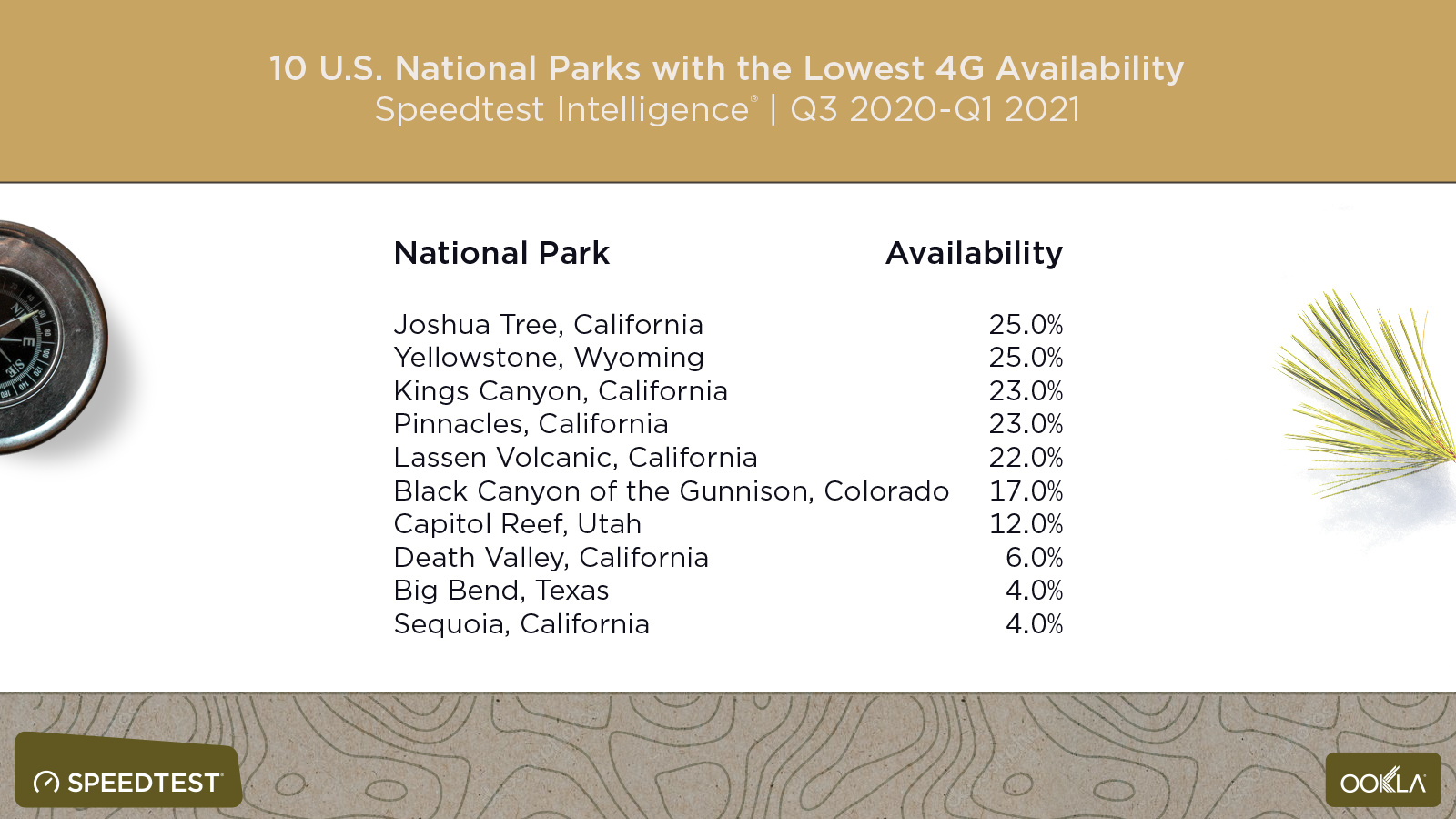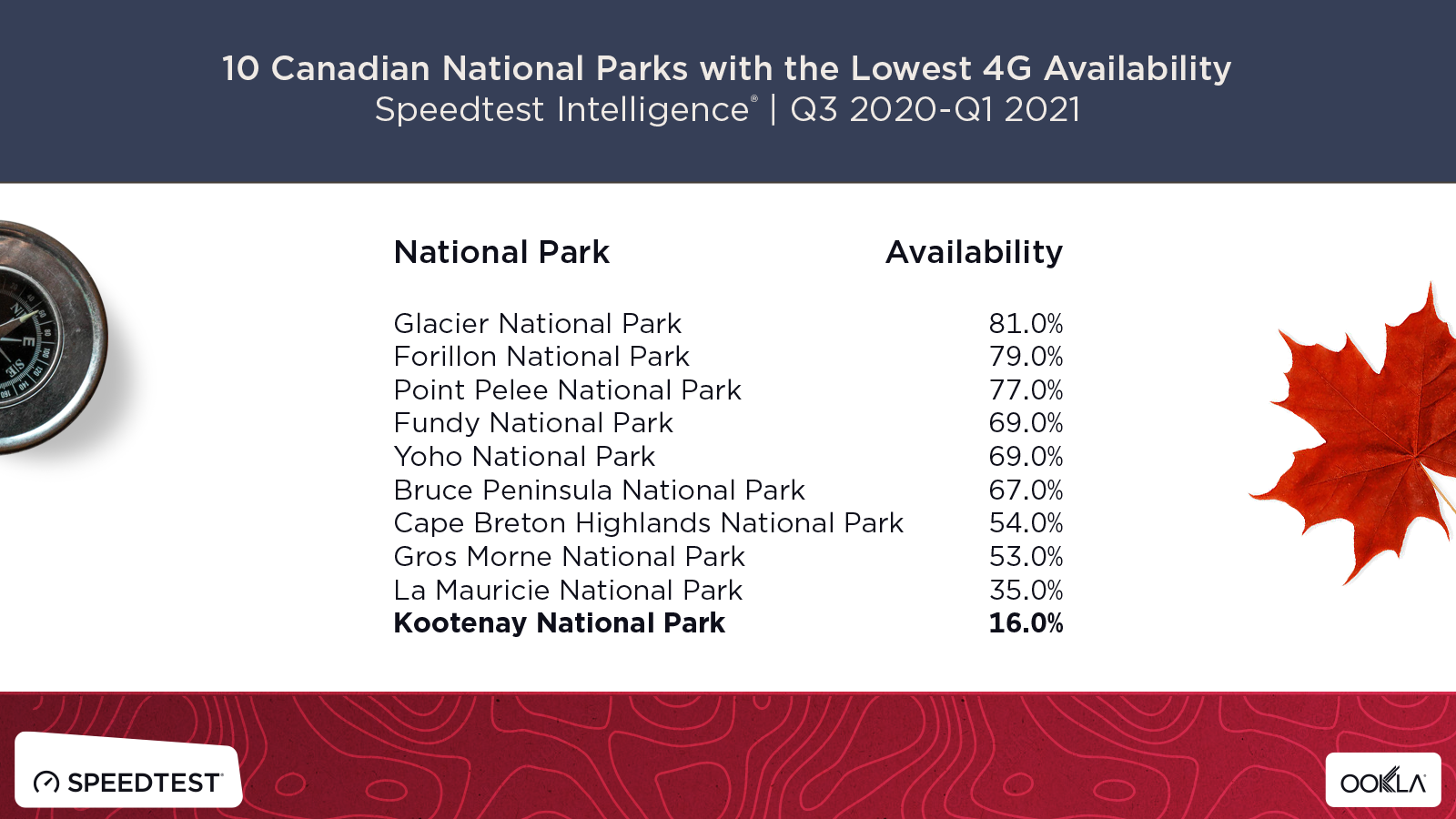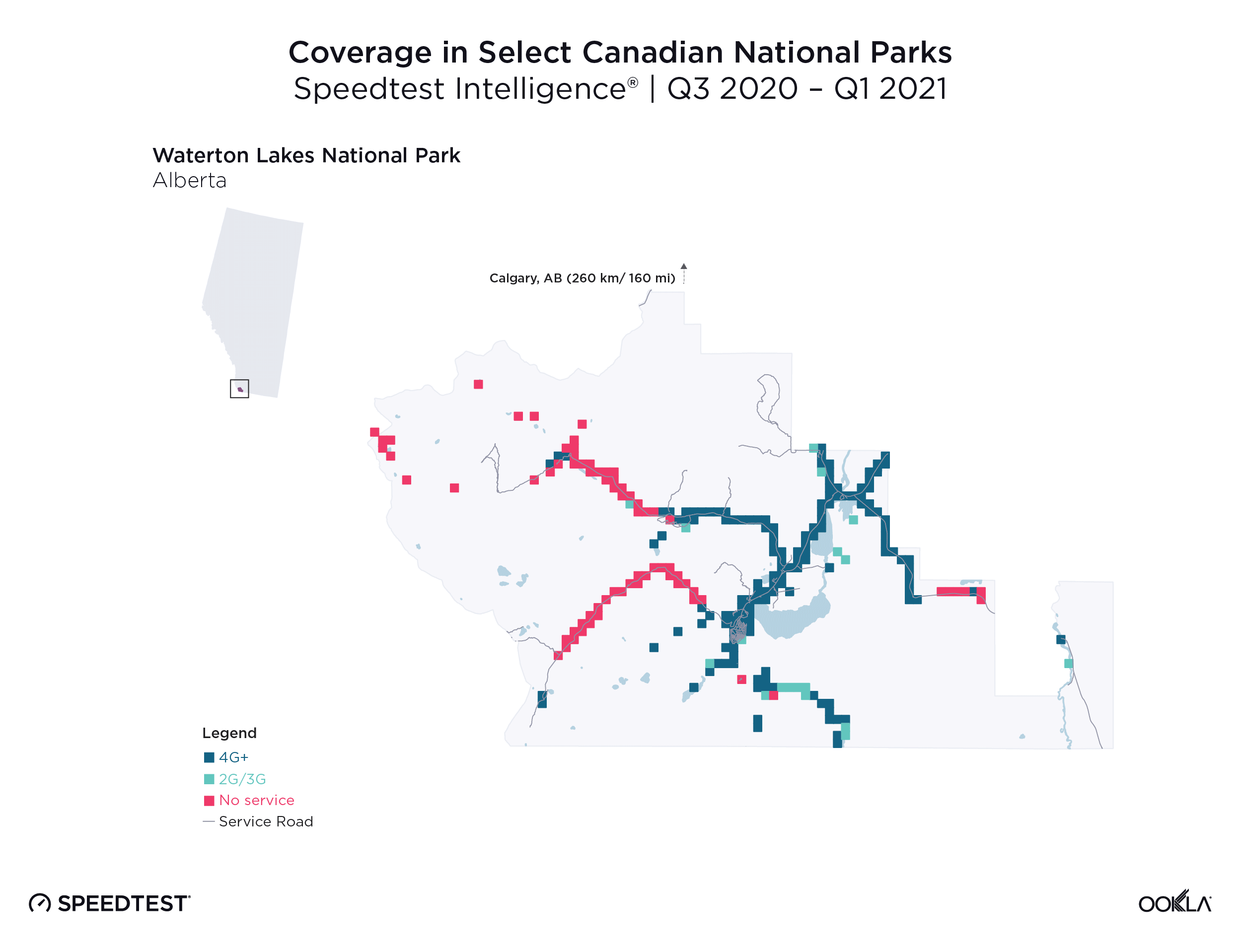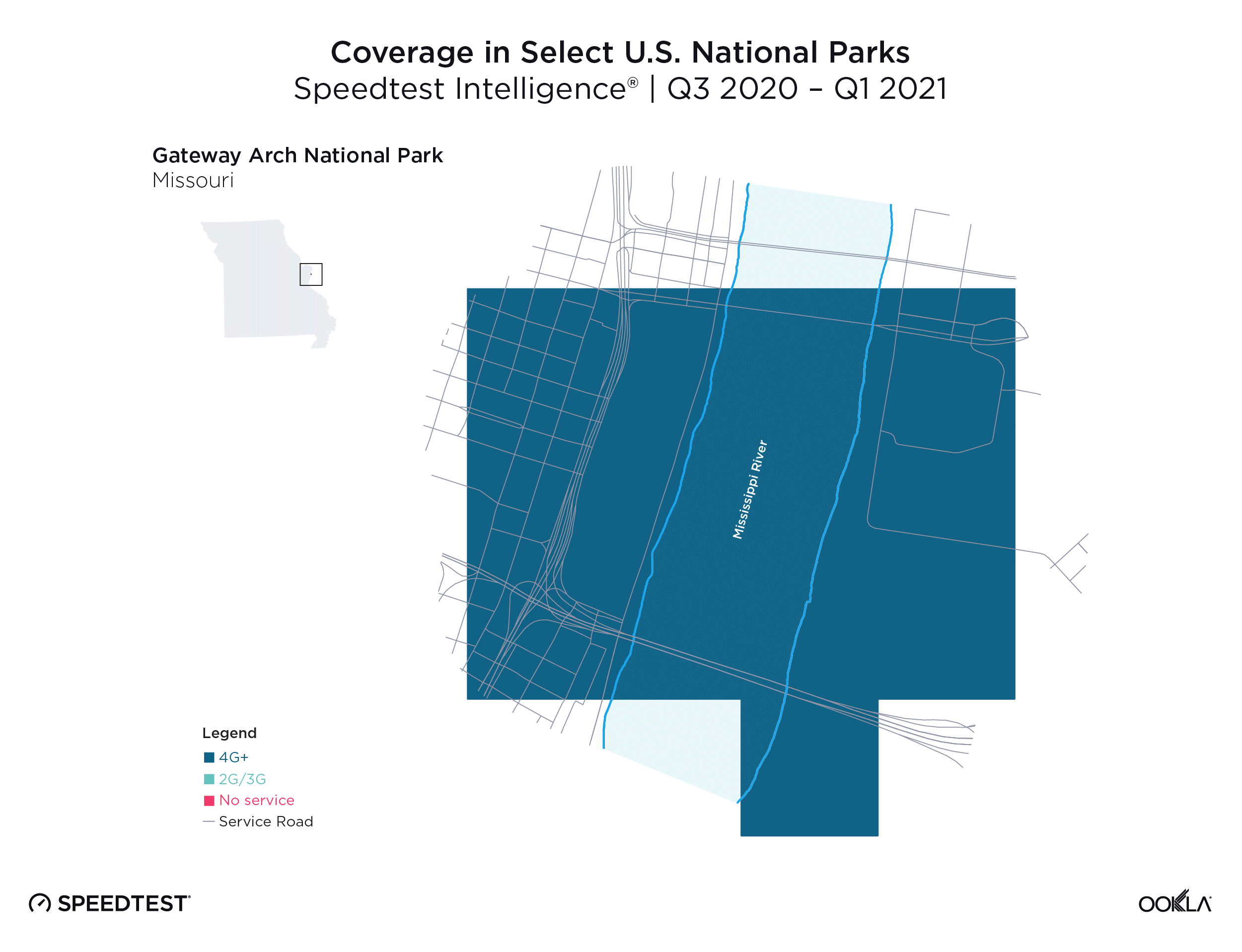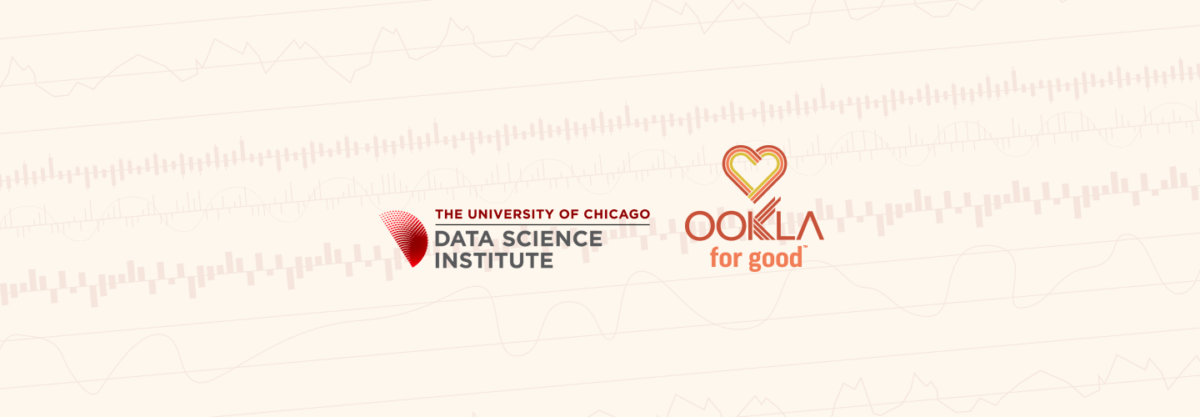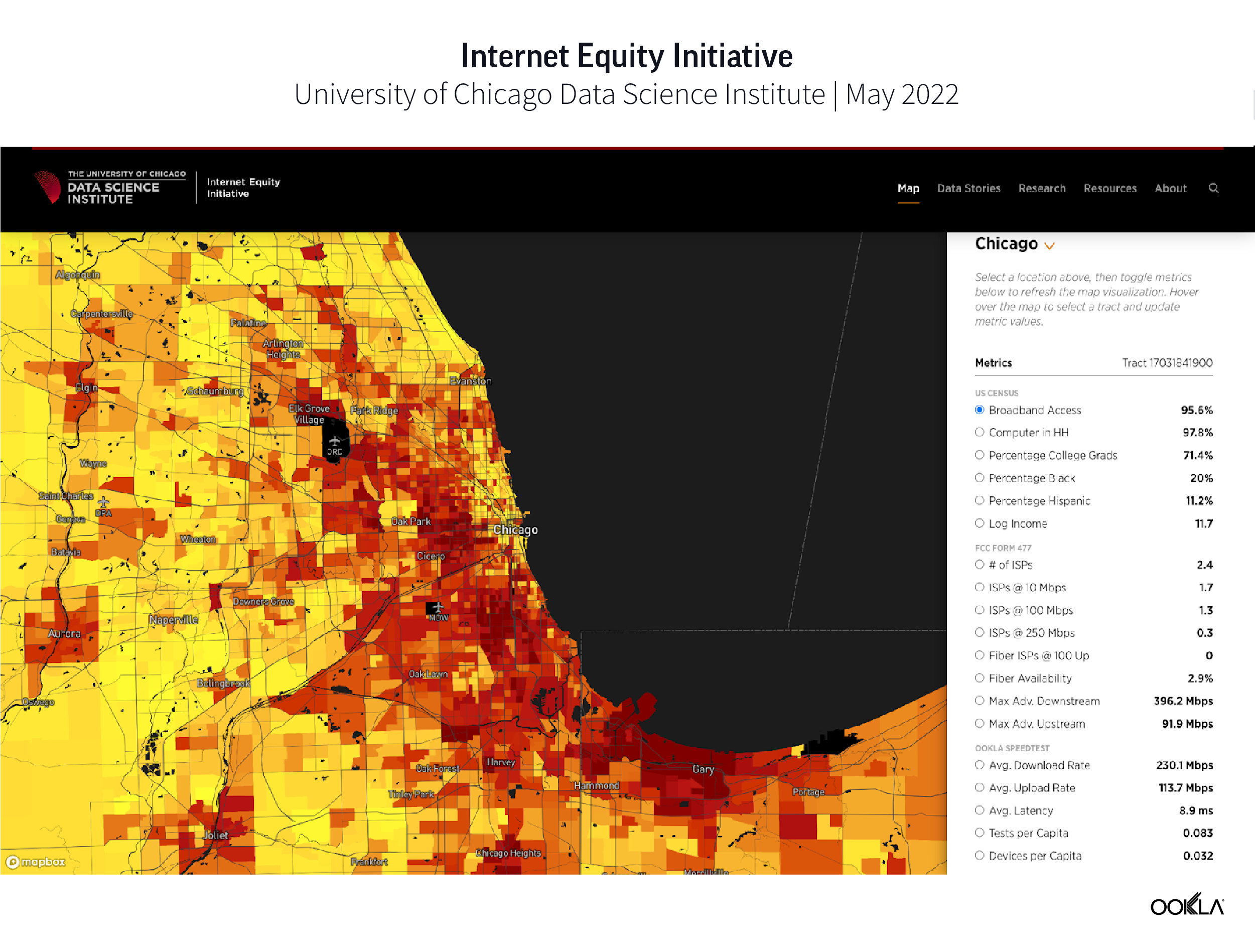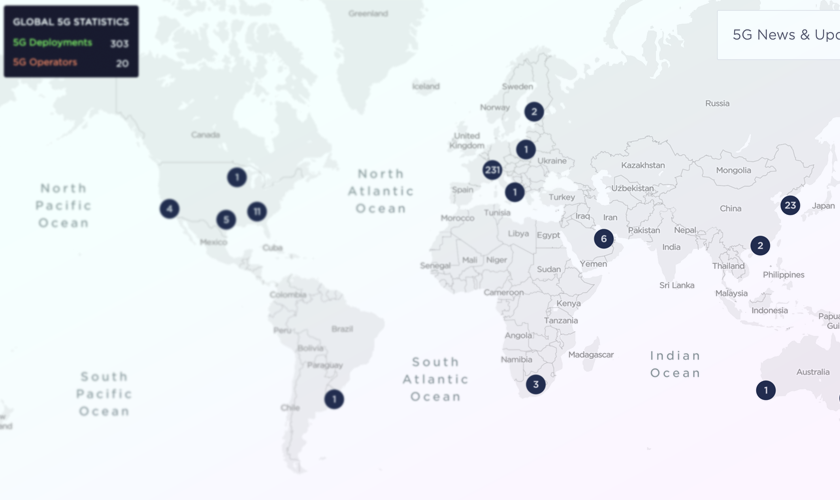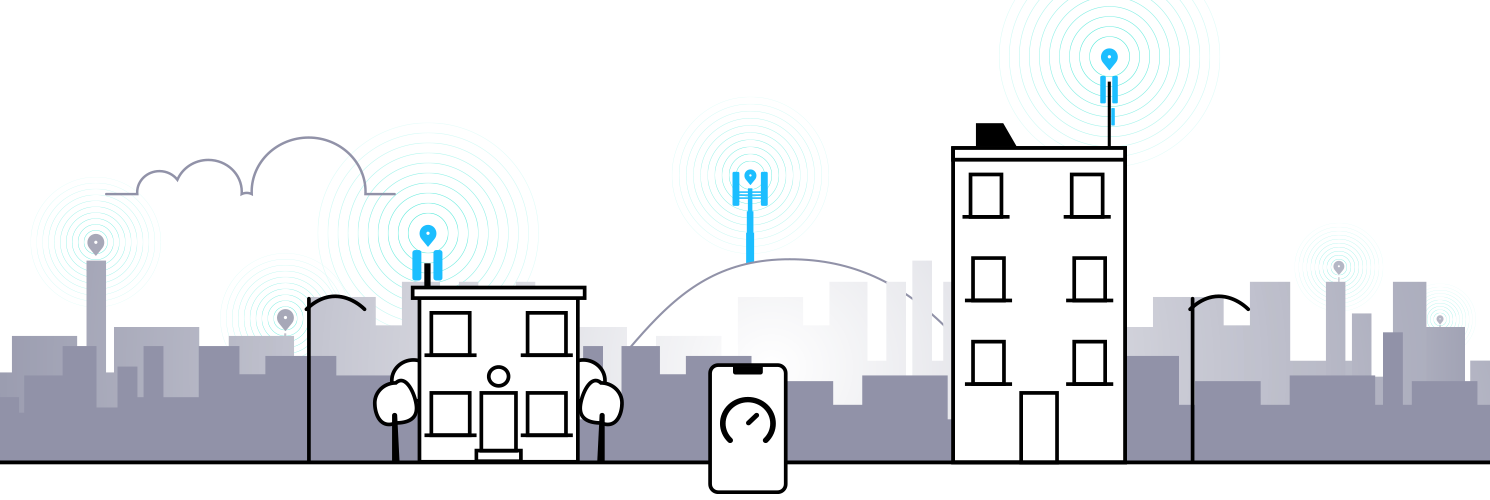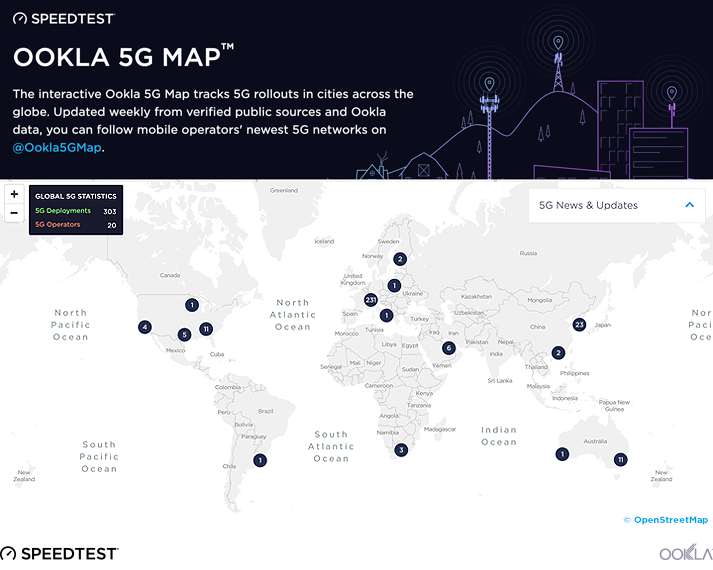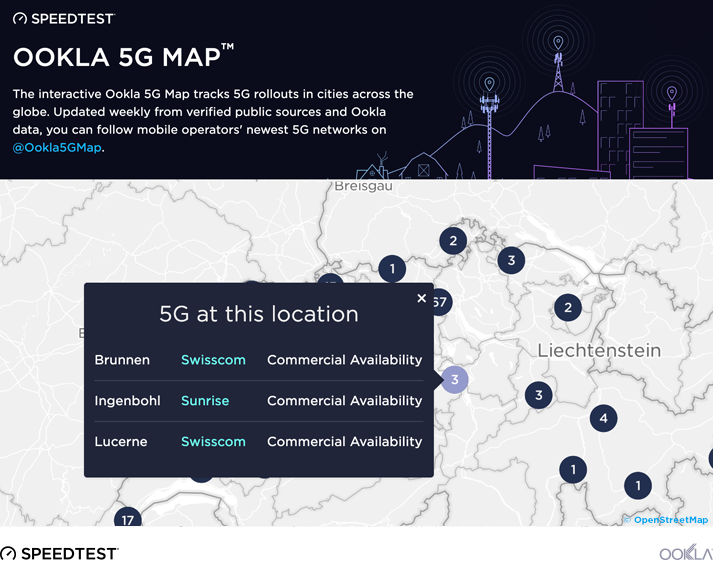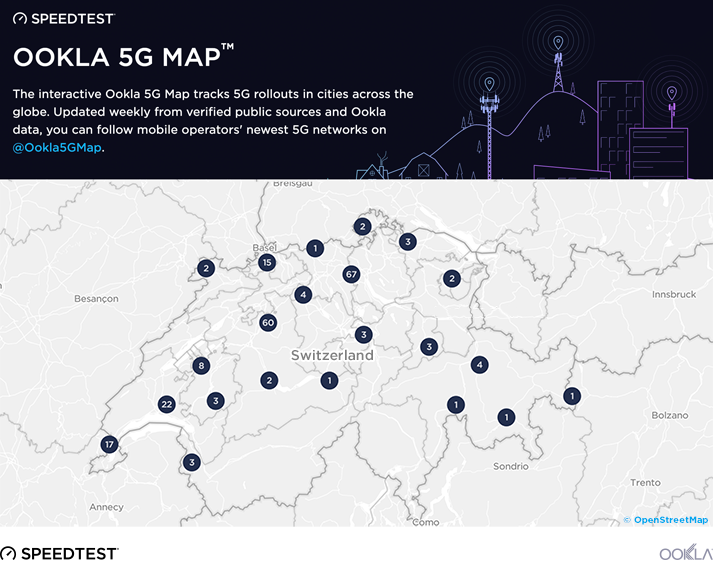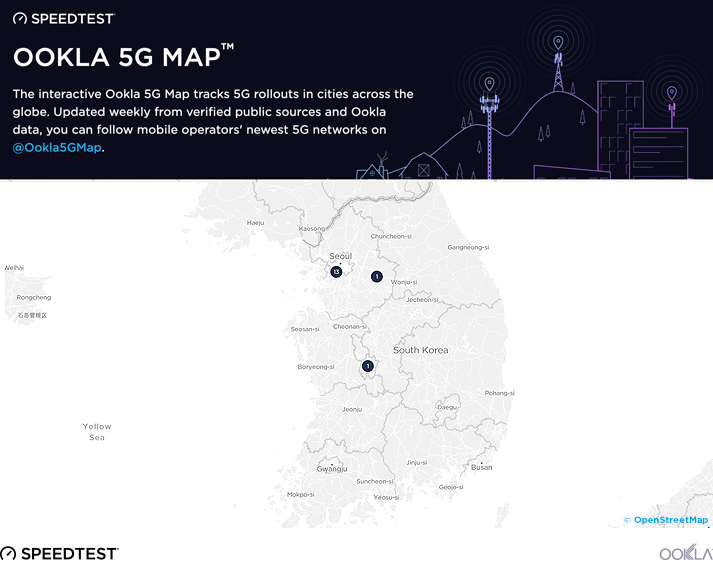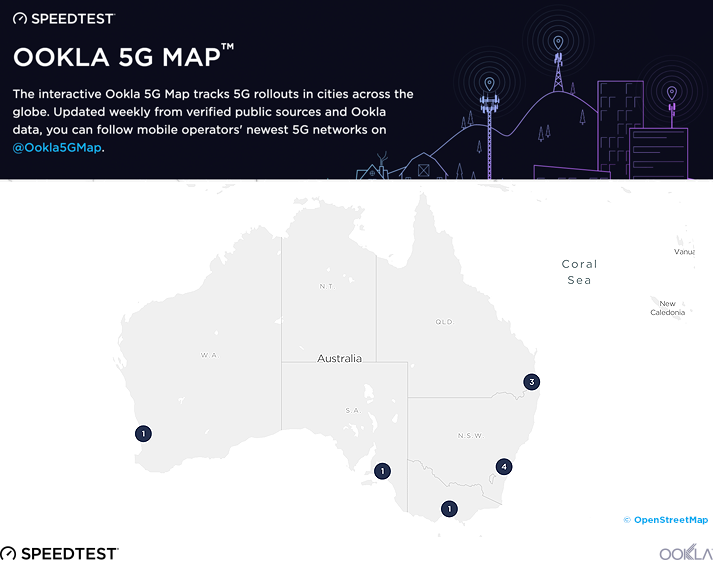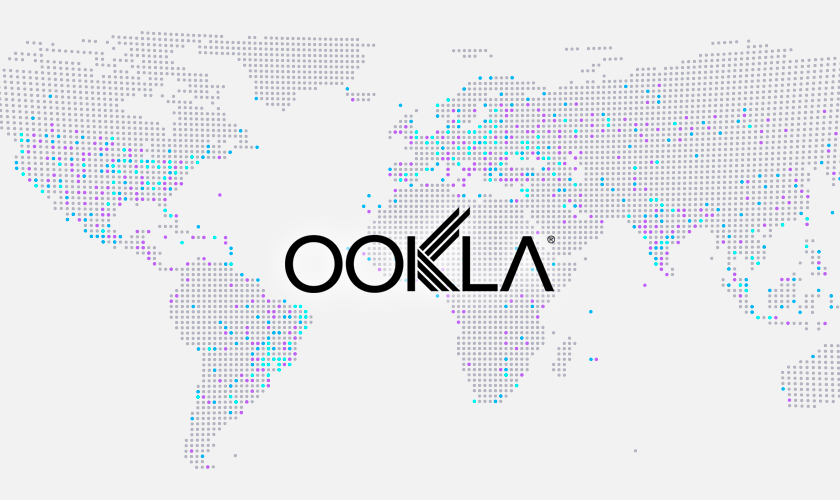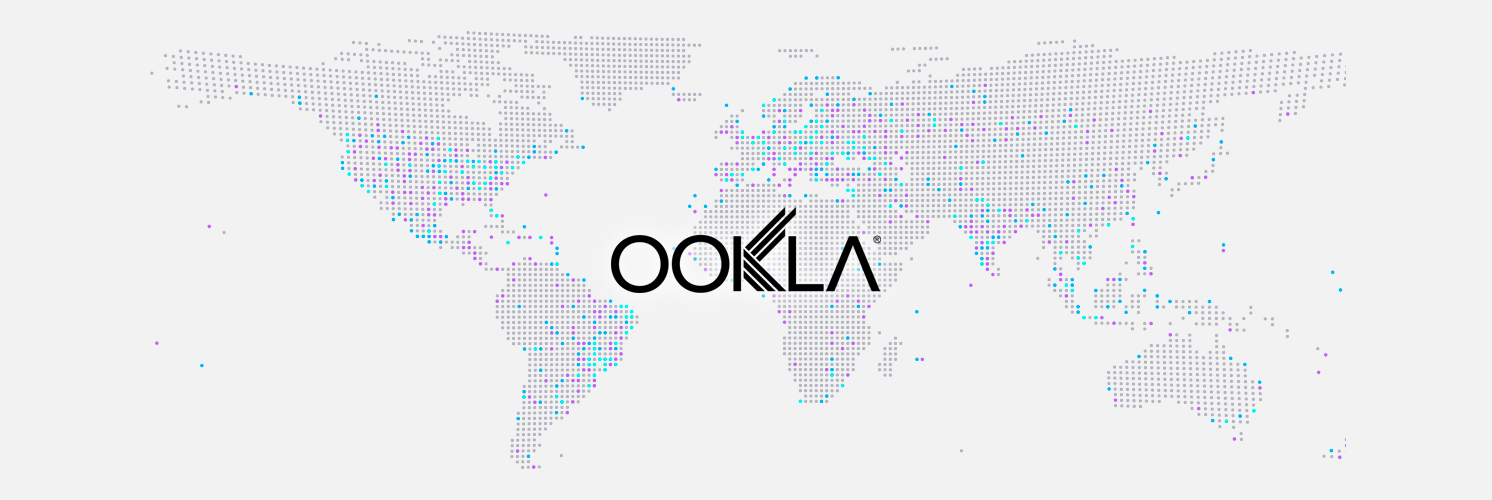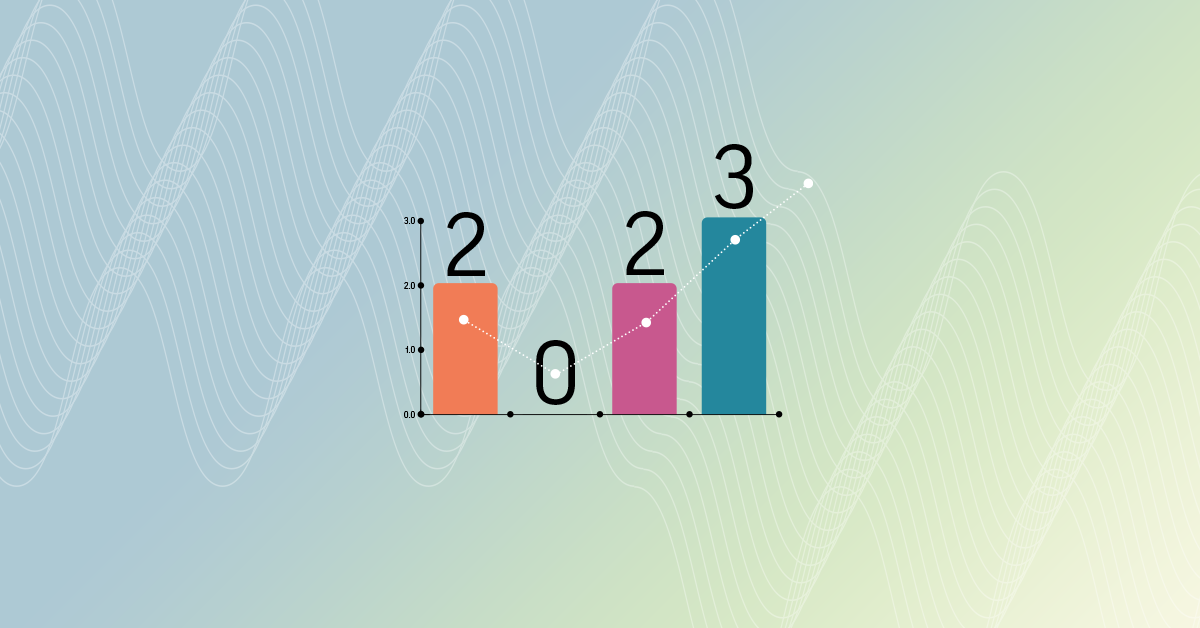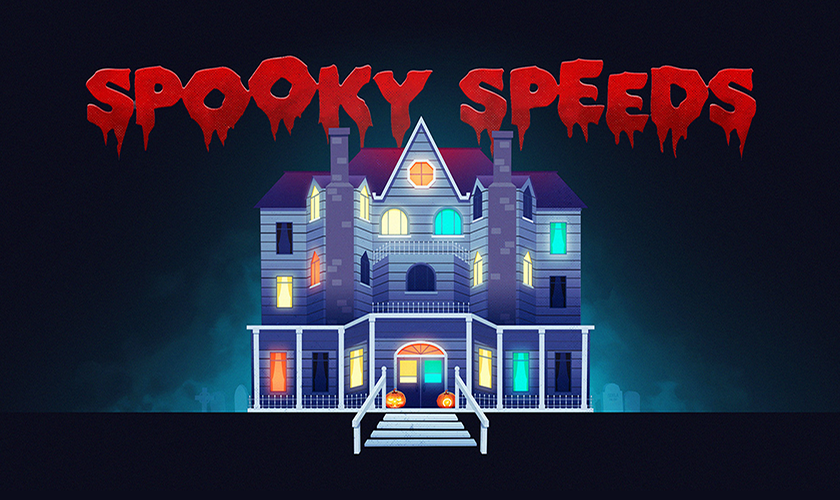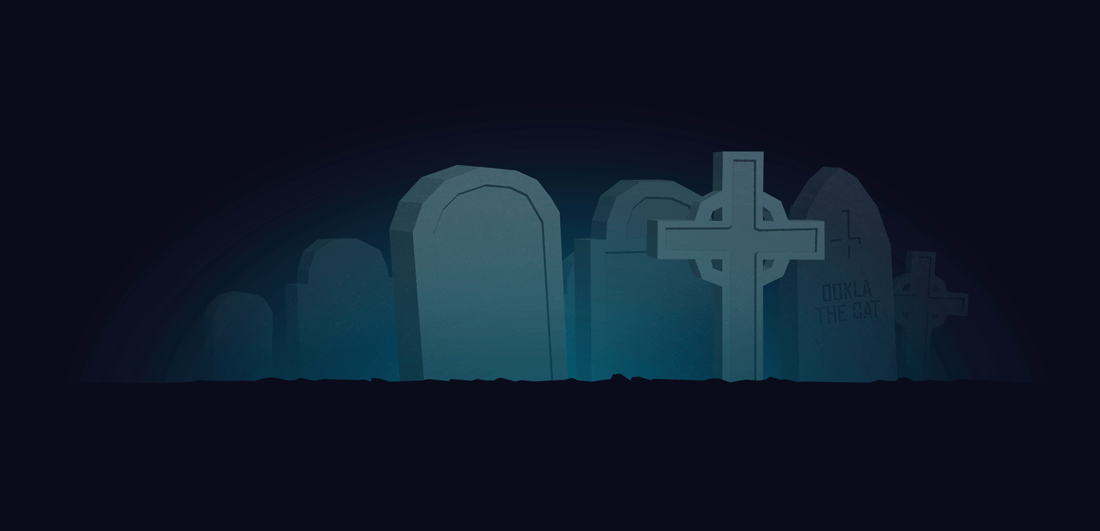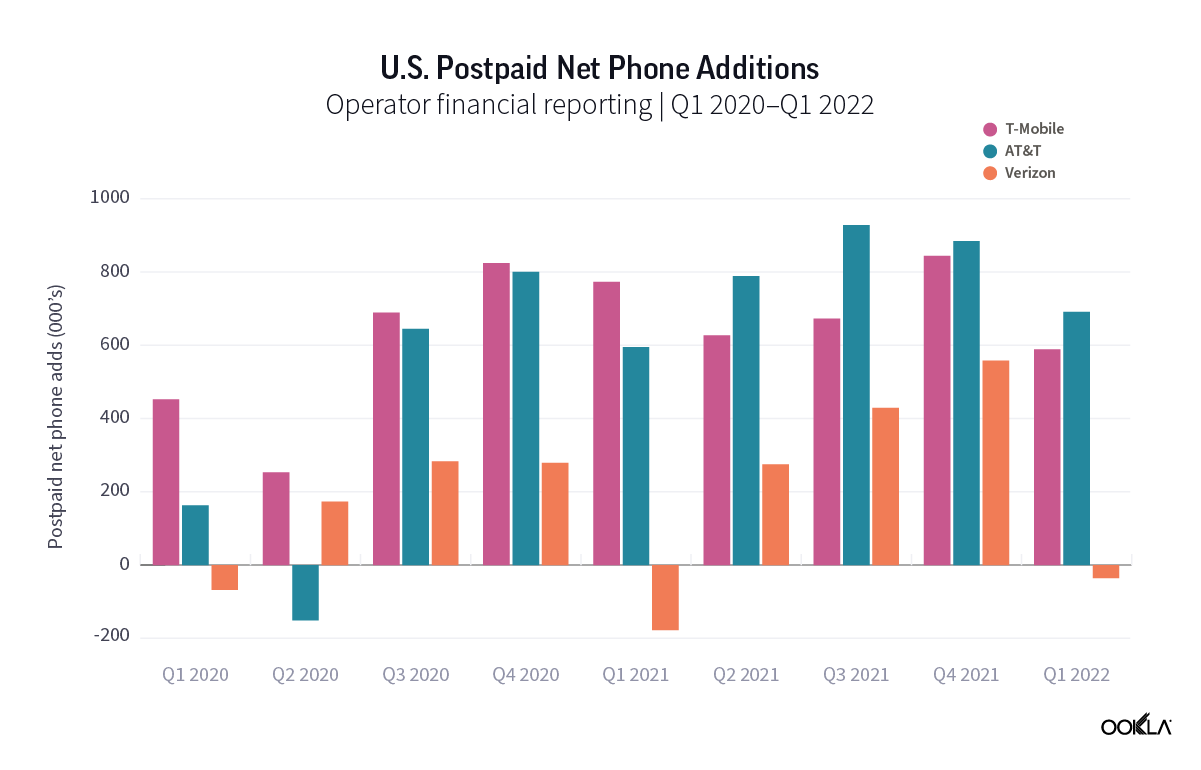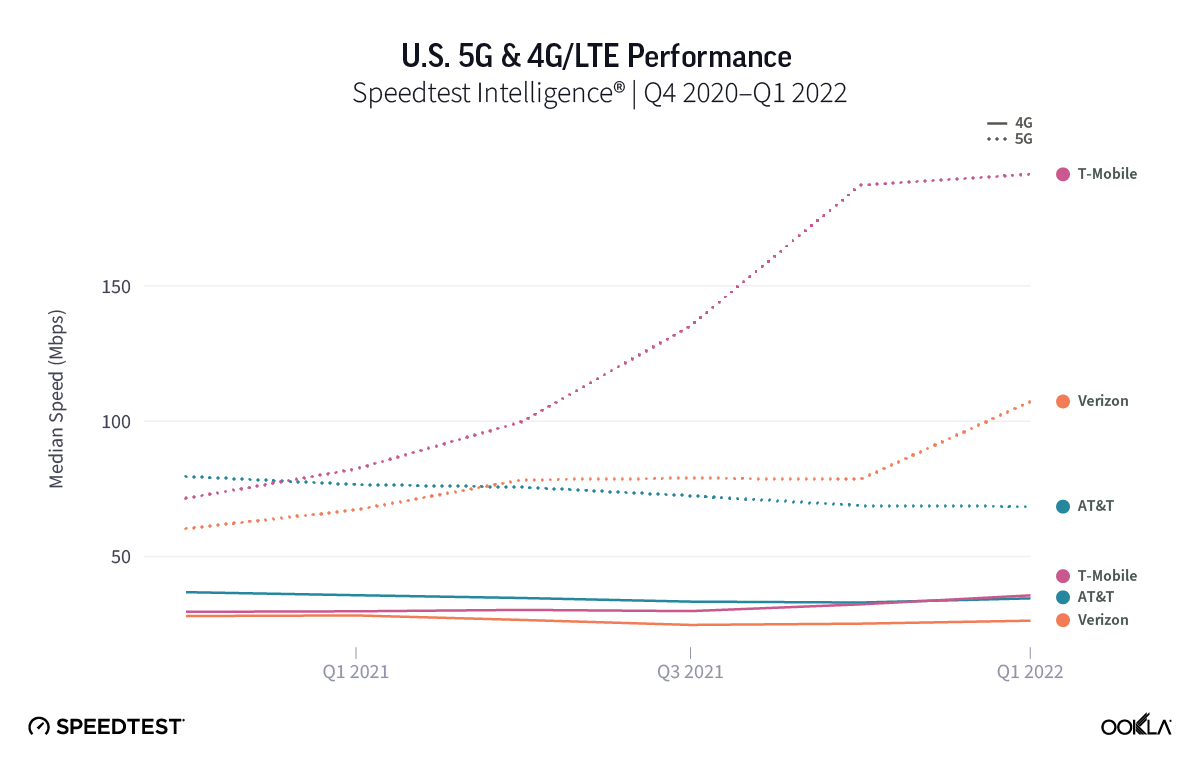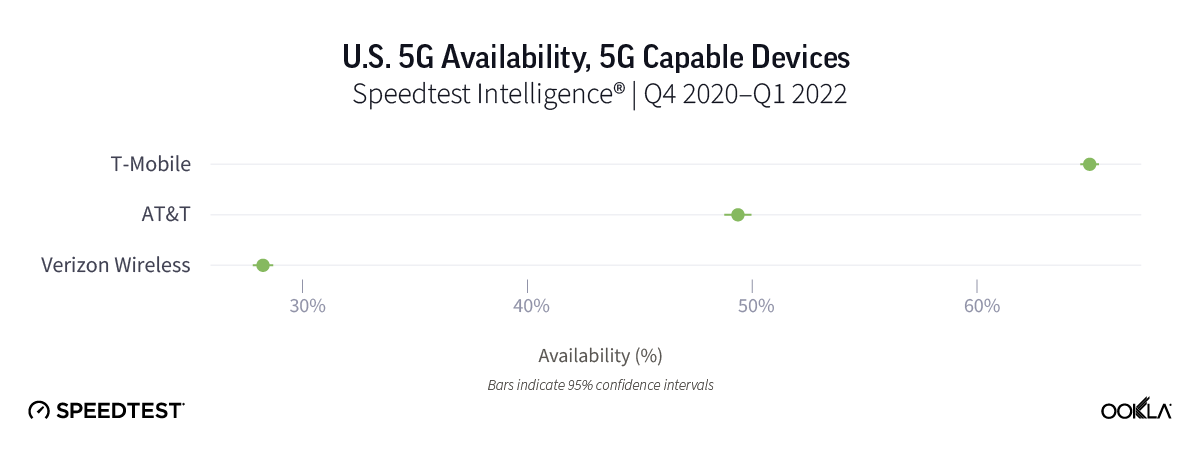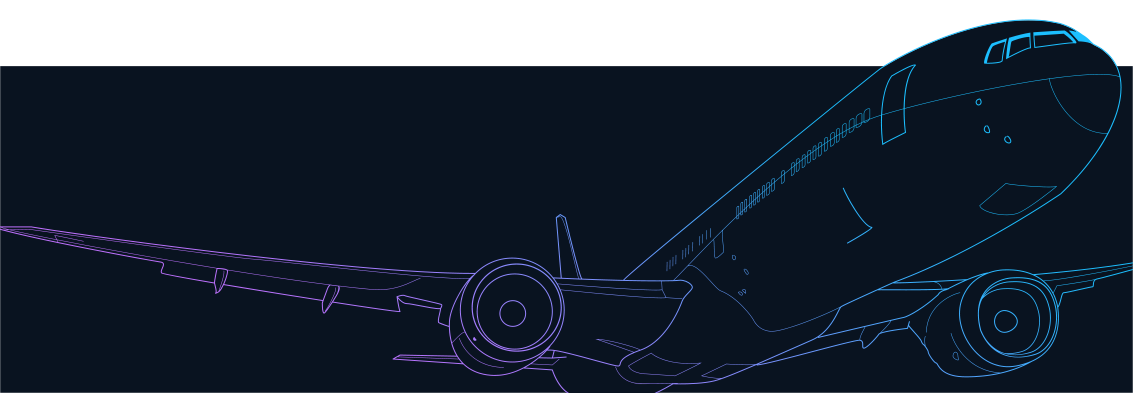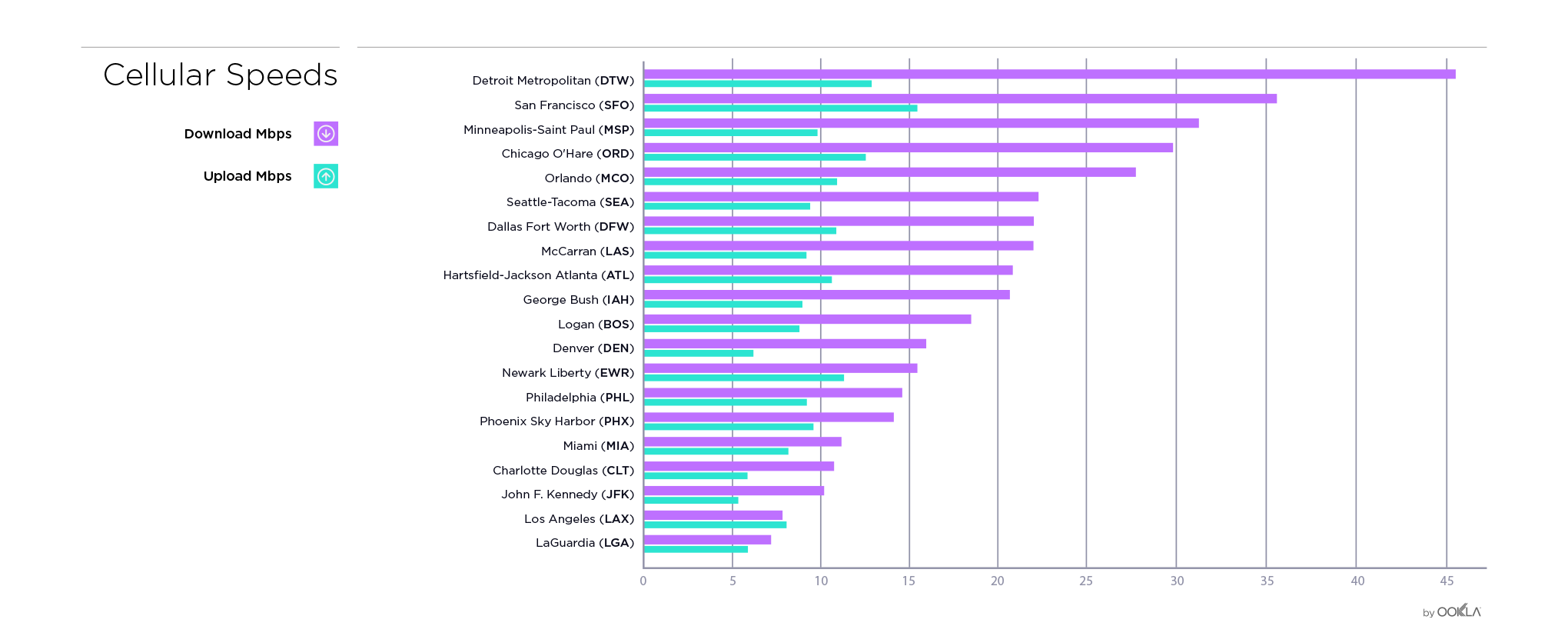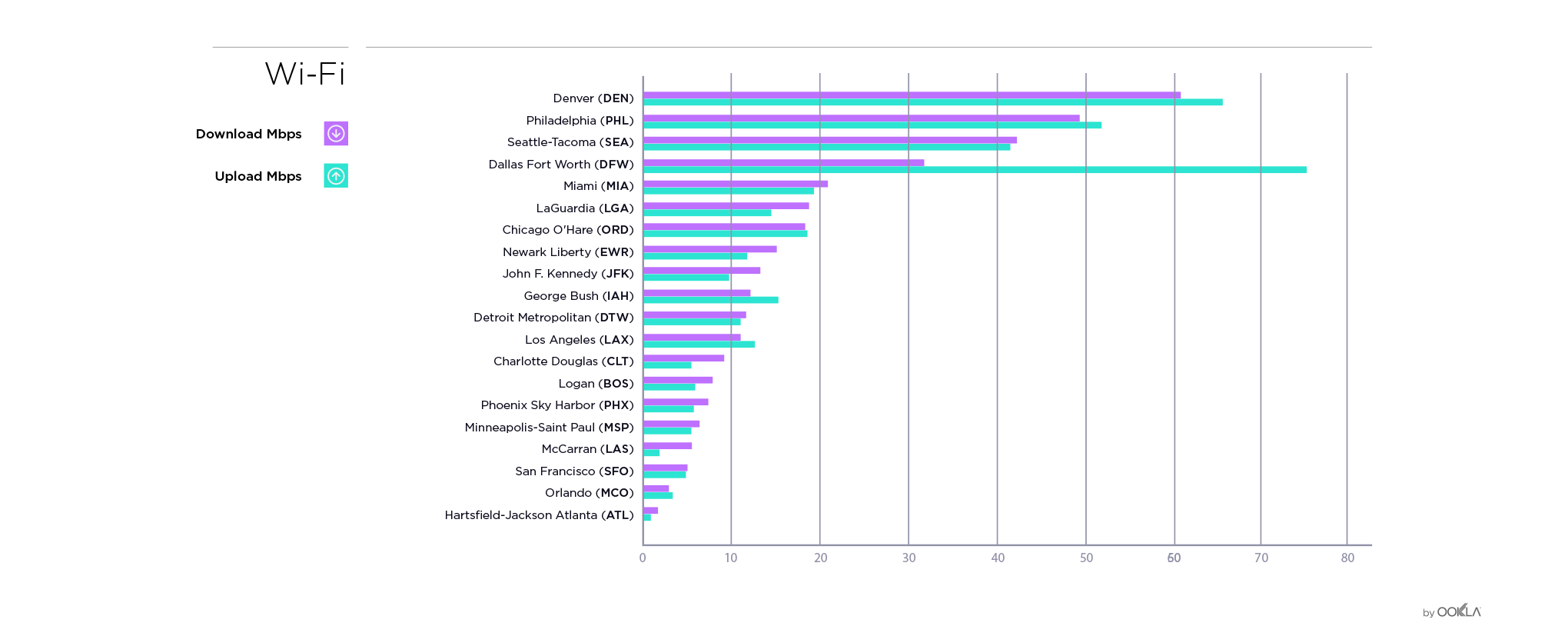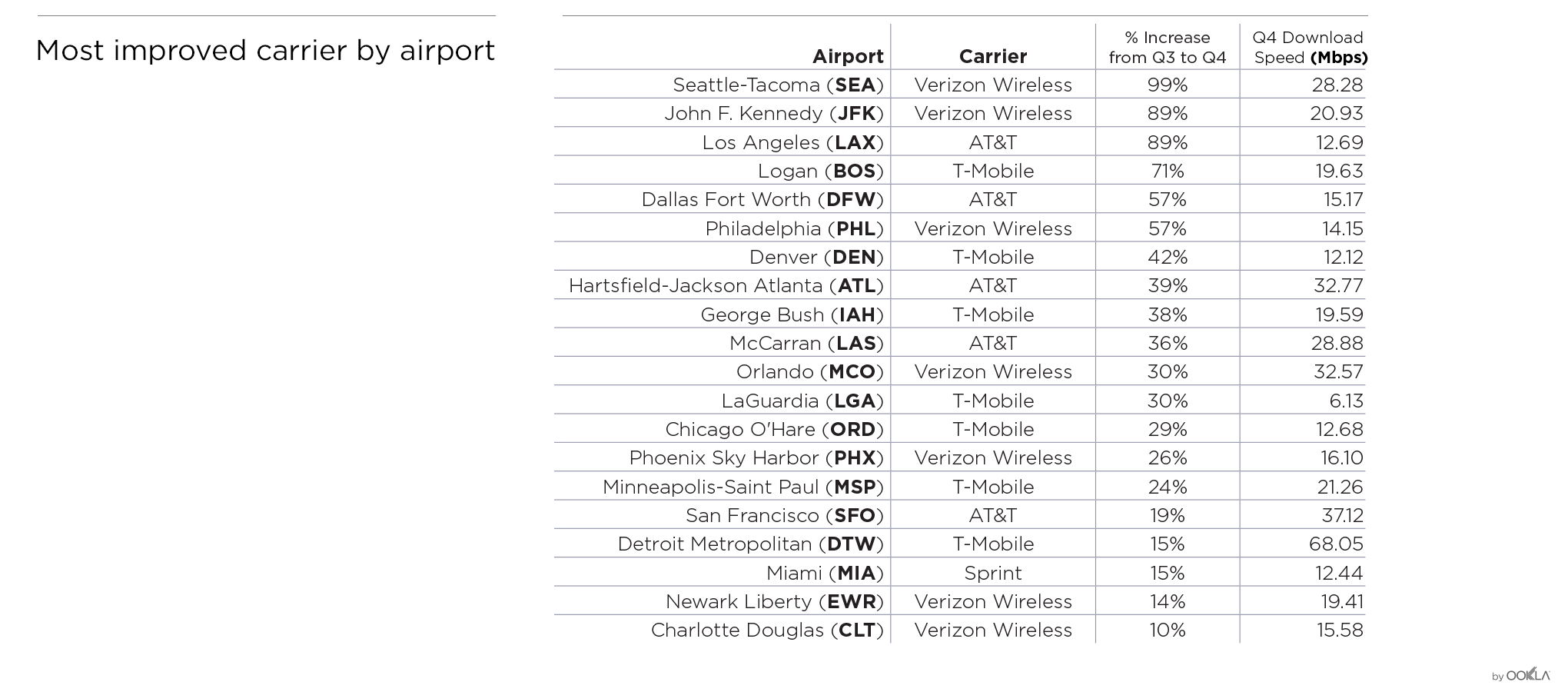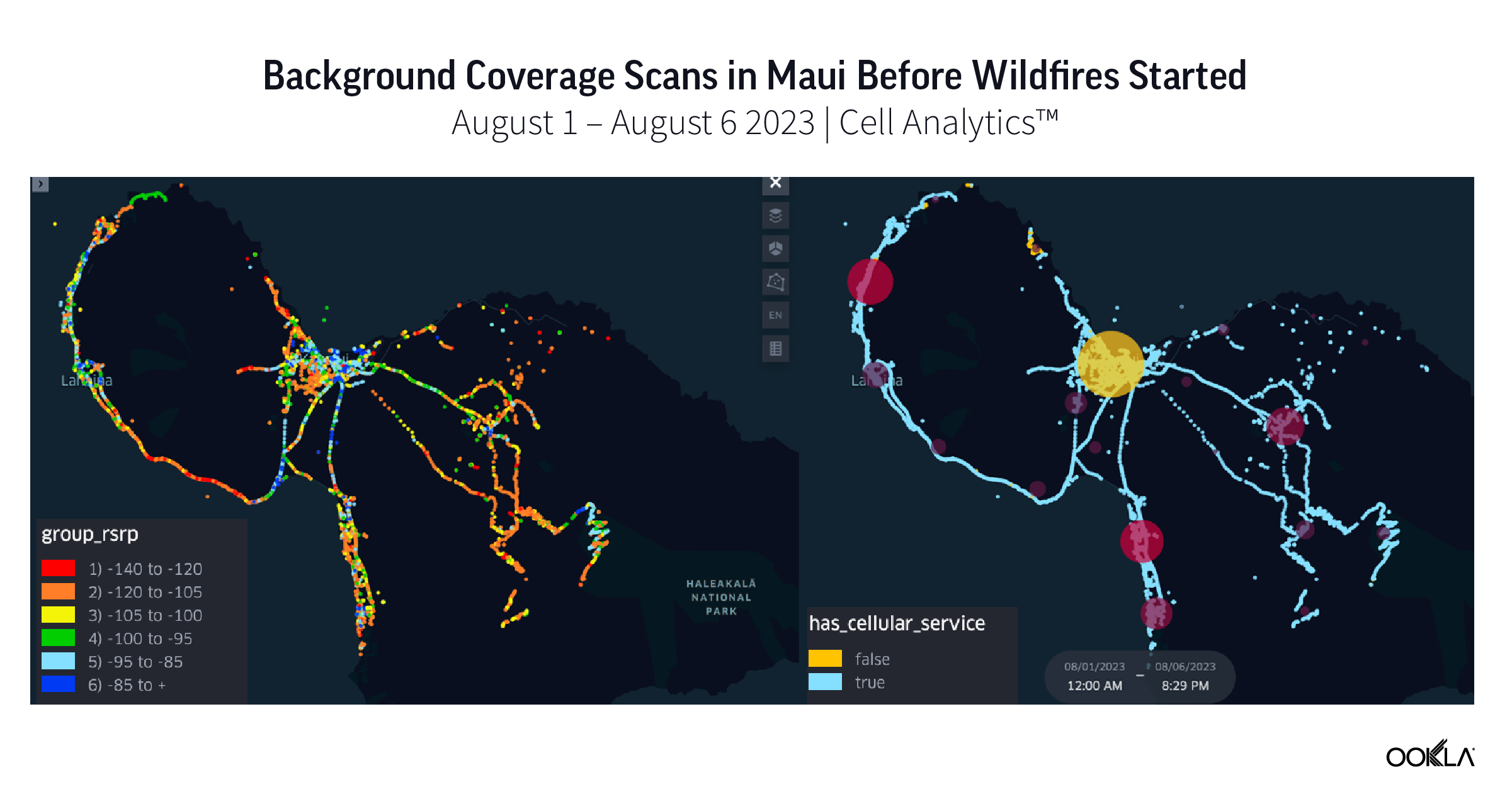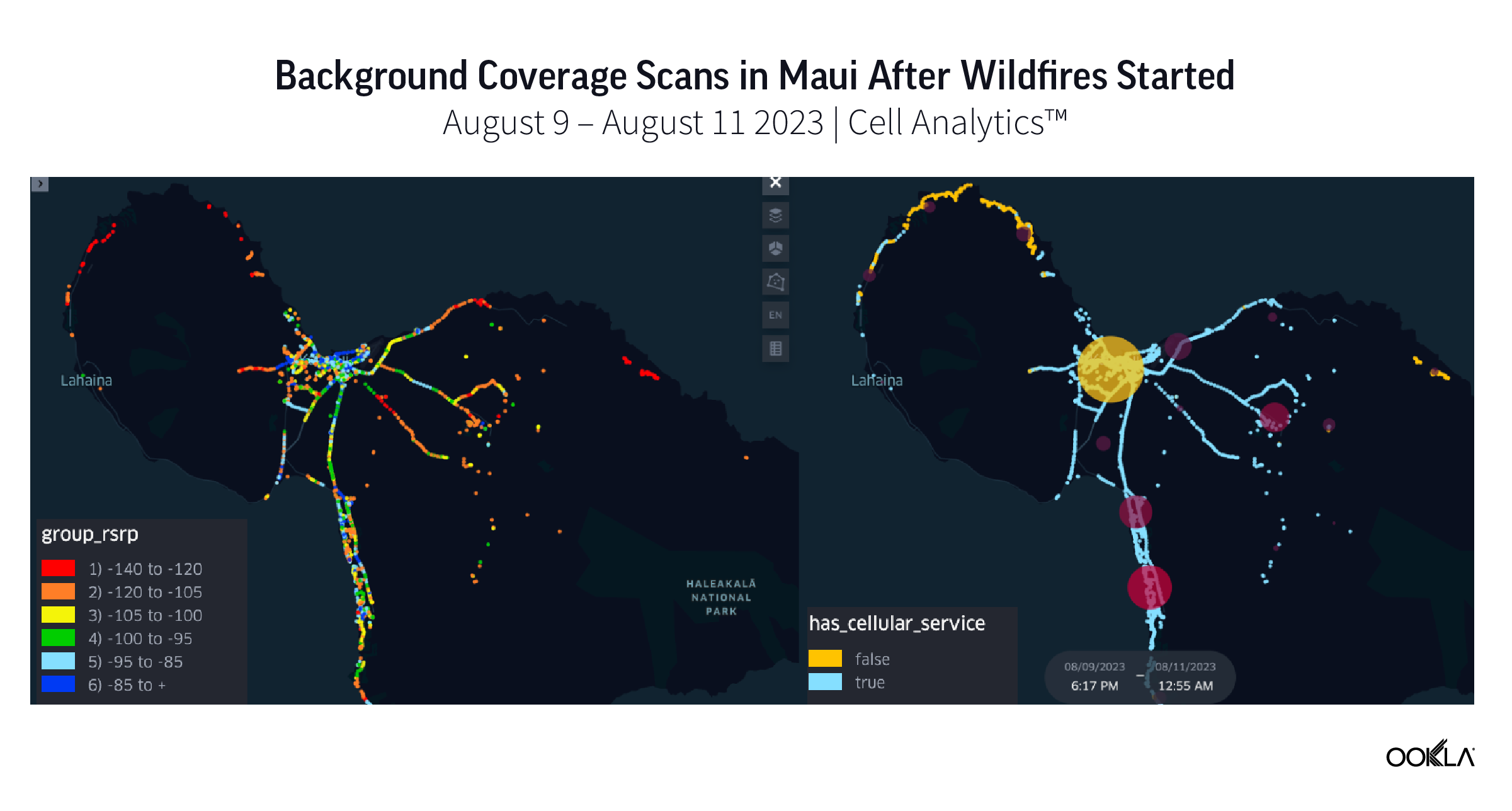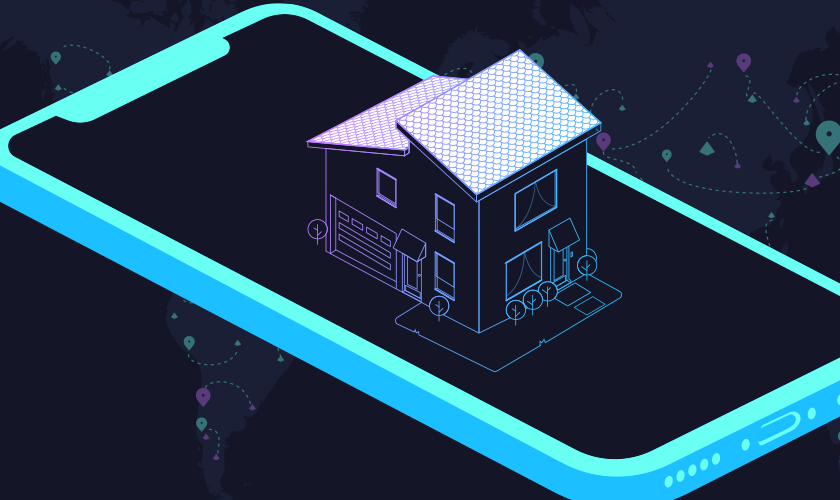
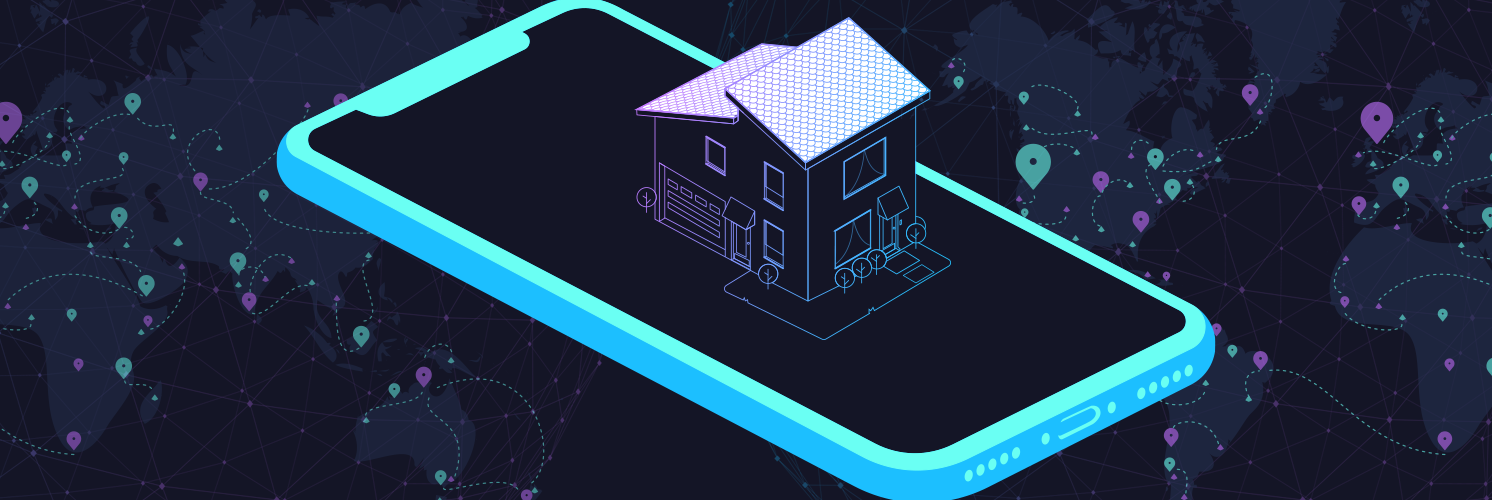
Gigabit-speed internet is all over the map, literally. With the exception of Antarctica, we found Speedtest results on fixed broadband gigabit speeds (download speeds of 750 Mbps or faster) on every continent. While some continents were better represented than others, we were heartened to see just how far gigabit internet has spread across the globe.
Using data from Speedtest Intelligence during the period August 1, 2017 – November 28, 2017, we defined gigabit tests as any result with a download speed in excess of 750 Mbps for the purposes of this article. While gigabit technically means 1,000 Mbps (or 1 Gbps), that’s the available speed and device limitations and throughput overhead often limit the actual performance of a connection. We’ve also calculated a gigabit user penetration (GUP) figure that represents the number of users who have gigabit results divided by the total population of the country.
Note that gigabit service is often highly localized, so just because your country (or even city) is represented does not mean that you can get gigabit at your house.
| Region | Number of Tests | Number of Users | Mean Download (Mbps) | Mean Upload (Mbps) |
|---|---|---|---|---|
| North America | 256,210 | 163,260 | 866.54 | 555.09 |
| Europe | 210,638 | 146,062 | 868.80 | 418.17 |
| Asia | 141,674 | 70,544 | 852.28 | 570.79 |
| Australasia | 11,792 | 7,188 | 879.70 | 520.43 |
| South America | 1,093 | 831 | 845.04 | 672.86 |
| Africa | 723 | 525 | 844.85 | 559.65 |
What might not be obvious is that North America has the largest number of gigabit tests. Europe is close behind and Asia takes third. Gigabit-speed results fall off dramatically in Australasia, South America and Africa.
Cities with the most tests are likewise spread across the globe from Hong Kong and Singapore to Austin, Texas.
| City | Country/Region | Number of Tests | Number of Users | Mean Download (Mbps) | Mean Upload (Mbps) |
|---|---|---|---|---|---|
| Hong Kong | Hong Kong (SAR) | 58,051 | 15,037 | 872.99 | 637.09 |
| Singapore | Singapore | 42,469 | 26,421 | 886.77 | 677.34 |
| Paris | France | 17,211 | 11,891 | 860.71 | 672.39 |
| New York | United States | 14,509 | 8,637 | 854.58 | 667.06 |
| Bucharest | Romania | 13,977 | 8,615 | 842.61 | 707.09 |
| San Francisco | United States | 8,525 | 3,899 | 859.41 | 733.37 |
| Toronto | Canada | 7,320 | 4,319 | 839.01 | 627.89 |
| Milan | Italy | 7,184 | 4,447 | 855.95 | 476.41 |
| Budapest | Hungary | 6,958 | 4,319 | 848.34 | 571.25 |
| Austin | United States | 6,045 | 3,960 | 859.49 | 744.89 |
North America
When looking at the top ten locations for gigabit tests in North America, the U.S. dominates with nearly ten times the number of tests as second-place Canada. Mexico comes in a distant third.
| Country/Region | Number of Tests | Number of Users | Mean Download (Mbps) | Mean Upload (Mbps) | GUP |
|---|---|---|---|---|---|
| United States | 228,475 | 145,551 | 866.54 | 555.09 | 0.04% |
| Canada | 26,616 | 16,897 | 871.46 | 319.00 | 0.05% |
| Mexico | 638 | 520 | 839.13 | 754.97 | 0.00% |
| Puerto Rico | 344 | 189 | 828.09 | 640.15 | 0.01% |
| Dominican Republic | 36 | 26 | 835.04 | 520.70 | 0.00% |
| Guadeloupe | 21 | 15 | 899.16 | 239.94 | 0.00% |
| Panama | 15 | 7 | 823.69 | 72.70 | 0.00% |
| Trinidad and Tobago | 14 | 14 | 827.42 | 735.84 | 0.00% |
| Barbados | 12 | 7 | 883.45 | 220.43 | 0.00% |
| Martinique | 10 | 7 | 944.56 | 238.61 | 0.00% |
Digging deeper into the data, Canada is first place for gigabit user penetration (GUP) in North America with 0.05% of people having received a gigabit speed result. The U.S. has a GUP of 0.04%, Puerto Rico 0.01% and Mexico 0.00%. Gigabit tests pop up elsewhere on the continent, but the numbers are low enough that the service appears to be either prohibitively expensive or available to a very small segment of the population.
Canada, Guadeloupe, Barbados and Martinique have much slower upload speeds than downloads. Asynchronous speeds, when download speed is radically different from upload, like this frequently occur when gigabit is delivered over cable rather than fiber. Panama’s upload speed is especially slow for gigabit service.
Nine ISPs in the U.S. showed more than 1,000 gigabit-level results with AT&T Internet coming out on top. Canada had two ISPs that met the 1,000 test threshold with Rogers having the most.
| City | Country/Region | Number of Tests | Number of Users | Mean Download (Mbps) | Mean Upload (Mbps) |
|---|---|---|---|---|---|
| New York | United States | 14,509 | 8,637 | 854.58 | 667.06 |
| San Francisco | United States | 8,525 | 3,899 | 859.41 | 733.37 |
| Toronto | Canada | 7,320 | 4,319 | 839.01 | 627.89 |
| Austin | United States | 6,045 | 3,960 | 859.49 | 744.89 |
| Houston | United States | 3,518 | 2,061 | 853.92 | 647.13 |
| Kansas City, MO | United States | 3,135 | 2,229 | 871.52 | 628.74 |
| Seattle | United States | 3,040 | 1,961 | 822.84 | 578.96 |
| Charlotte | United States | 2,934 | 1,773 | 856.05 | 769.20 |
| San Antonio | United States | 2,901 | 1,780 | 861.50 | 681.93 |
| Dallas | United States | 2,433 | 1,499 | 841.77 | 729.27 |
At the city level, all but one of the ten North American cities with the largest number of gigabit tests are in the U.S. This isn’t surprising given the volume of tests in the U.S. versus the rest of the continent. Several of these cities were ranked among the fastest in the U.S. in our recent market snapshot.
Europe
Among the ten European countries with the most gigabit tests, France comes out on top with nearly four times as many tests as second-place Romania.
| Country/Region | Number of Tests | Number of Users | Mean Download (Mbps) | Mean Upload (Mbps) | GUP |
|---|---|---|---|---|---|
| France | 94,269 | 65,437 | 877.68 | 254.05 | 0.10% |
| Romania | 23,552 | 14,997 | 856.94 | 470.48 | 0.08% |
| Hungary | 20,487 | 15,093 | 867.51 | 241.52 | 0.15% |
| Italy | 15,822 | 9,896 | 871.29 | 236.80 | 0.02% |
| Switzerland | 7,947 | 6,073 | 850.61 | 771.78 | 0.07% |
| Ukraine | 5,852 | 4,051 | 873.57 | 677.24 | 0.01% |
| Netherlands | 4,225 | 3,285 | 872.46 | 730.00 | 0.02% |
| Denmark | 4,223 | 3,191 | 860.26 | 716.82 | 0.06% |
| Iceland | 3,604 | 2,446 | 884.64 | 860.23 | 0.71% |
| Sweden | 3,532 | 2,439 | 864.62 | 639.76 | 0.02% |
Gigabit test penetration is another matter entirely with Iceland, the continent’s least populated country, coming first in the world for GUP with 0.71%. Hungary and Monaco are second and third with 0.15% and France is fourth. Lithuania, Jersey, Romania, Switzerland, Luxembourg and Denmark all have GUPs that are higher than any seen in North America.
Italy has a much slower mean upload speed than download for gigabit results. This asynchronicity usually means that gigabit is delivered over cable rather than fiber.
France has the most ISPs with 1,000 or more gigabit test results with four. Orange slightly edges out Bouygues for number of tests. Hungary, Italy and Lithuania have two ISPs apiece that meet the threshold with DIGI having the most in Hungary and Vodafone in Italy. Skynet and Telia are virtually tied in Lithuania. In Romania only Digi showed more than 1,000 gigabit tests during the period. In Ukraine and the U.K. we only saw Lanet and Hyperoptic, respectively, meeting the criteria.
| City | Country/Region | Number of Tests | Number of Users | Mean Download (Mbps) | Mean Upload (Mbps) |
|---|---|---|---|---|---|
| Paris | France | 17,211 | 11,891 | 860.71 | 672.39 |
| Bucharest | Romania | 13,977 | 8,615 | 842.61 | 707.09 |
| Milan | Italy | 7,184 | 4,447 | 855.95 | 476.41 |
| Budapest | Hungary | 6,958 | 4,319 | 848.34 | 571.25 |
| Lyon | France | 4,379 | 2,962 | 880.79 | 219.38 |
| Kiev | Ukraine | 4,254 | 2,921 | 842.36 | 745.55 |
| Vilnius | Lithuania | 2,414 | 1,945 | 869.76 | 717.92 |
| Marseille | France | 2,320 | 1,530 | 868.89 | 400.53 |
| Turin | Italy | 2,299 | 1,275 | 873.64 | 175.66 |
| Reykjavík | Iceland | 2,166 | 1,413 | 884.52 | 778.67 |
The ten European cities with the largest number of gigabit tests are well distributed throughout the continent. France holds three spots with Paris, Lyon and Marseille, while Italy holds two with Milan and Turin. Not surprisingly, most of the remaining cities are capitals of the countries they represent.
Asia
As the city with the most gigabit tests in the world, Hong Kong also tops Asia. Singapore is second, Russia third, and Japan a close fourth.
| Country/Region | Number of Tests | Number of Users | Mean Download (Mbps) | Mean Upload (Mbps) | GUP |
|---|---|---|---|---|---|
| Hong Kong | 58,051 | 15,037 | 872.99 | 637.09 | 0.20% |
| Singapore | 42,469 | 26,421 | 886.77 | 677.34 | 0.47% |
| Russia | 9,923 | 7,666 | 889.75 | 571.38 | 0.01% |
| Japan | 9,128 | 6,600 | 808.31 | 645.69 | 0.01% |
| South Korea | 5,761 | 4,640 | 827.78 | 724.92 | 0.01% |
| India | 2,760 | 1,547 | 874.98 | 692.43 | 0.00% |
| China | 2,354 | 1,524 | 848.91 | 435.53 | 0.00% |
| Thailand | 2,111 | 1,242 | 848.46 | 369.85 | 0.00% |
| Israel | 1,920 | 1,137 | 878.52 | 488.73 | 0.01% |
| Philippines | 1,535 | 980 | 856.26 | 569.88 | 0.00% |
Gigabit user penetration (GUP) shows that Singapore has the largest percentage of users with gigabit tests per capita in Asia and the second largest in the world. Hong Kong comes in second in Asia and Macau third. All three beat the GUPs of any country in North America and are competitive with what’s seen in Europe.
Upload speeds in the ten Asian countries with the most gigabit tests are much more consistent with gigabit expectations than they are in North America or Europe which likely means that fiber is prevalent.
Singapore had five ISPs with more than 1,000 gigabit tests with SingTel coming in first for volume. Hong Kong had three with NETVIGATOR showing by far the most tests. India, Russia and South Korea each only showed one ISP that met the 1,000 gigabit test threshold. Those ISPs were ACT, Rostelecom and KT, respectively.
| City | Country/Region | Number of Tests | Number of Users | Mean Download (Mbps) | Mean Upload (Mbps) |
|---|---|---|---|---|---|
| Hong Kong | Hong Kong (SAR) | 58,051 | 15,037 | 872.99 | 637.09 |
| Singapore | Singapore | 42,469 | 26,421 | 886.77 | 677.34 |
| Seoul | South Korea | 3,688 | 2,971 | 838.86 | 661.27 |
| Saint Petersburg | Russia | 2,021 | 1,411 | 853.75 | 660.11 |
| Hyderabad | India | 1,416 | 859 | 884.32 | 662.62 |
| Chiyoda | Japan | 1,336 | 967 | 840.09 | 543.03 |
| Moscow | Russia | 1,185 | 896 | 838.54 | 690.63 |
| Perm | Russia | 1,113 | 883 | 942.74 | 327.28 |
| Macau | Macau (SAR) | 966 | 384 | 831.81 | 845.07 |
| Petah Tikva | Israel | 813 | 383 | 865.03 | 580.17 |
As Hong Kong and Singapore top the list of cities with the highest gigabit test volume in the world, they also win Asia. Russia has three cities on the list.
Australasia
New Zealand has ten times as many gigabit speed tests as Australia. No other country in Australasia showed gigabit tests during the period we studied.
| Country/Region | Number of Tests | Number of Users | Mean Download (Mbps) | Mean Upload (Mbps) | GUP |
|---|---|---|---|---|---|
| New Zealand | 10,832 | 6,458 | 866.91 | 464.42 | 0.13% |
| Australia | 956 | 726 | 903.62 | 621.10 | 0.00% |
New Zealand’s gigabit user penetration (GUP) was a globally competitive 0.13% while Australia’s barely registered.
Mean upload speed on gigabit tests in Australia are faster than those in New Zealand, though both countries show competitive speeds which likely means that gigabit service is delivered over fiber.
In New Zealand we saw two ISPs that topped the 1,000 gigabit test threshold we set with MyRepublic slightly edging out Spark in gigabit test volume. No ISP in Australia showed 1,000 or more gigabit results in the period we studied.
| City | Country/Region | Number of Tests | Number of Users | Mean Download (Mbps) | Mean Upload (Mbps) |
|---|---|---|---|---|---|
| Auckland | New Zealand | 4,842 | 2,681 | 861.30 | 498.28 |
| Christchurch | New Zealand | 1,402 | 706 | 865.43 | 452.40 |
| Wellington | New Zealand | 763 | 465 | 830.37 | 400.74 |
| Lower Hutt | New Zealand | 551 | 361 | 846.45 | 384.60 |
| Dunedin | New Zealand | 386 | 242 | 850.17 | 378.93 |
| Hamilton | New Zealand | 385 | 188 | 871.34 | 506.14 |
| Sydney | Australia | 172 | 101 | 907.97 | 678.12 |
| Porirua | New Zealand | 122 | 86 | 834.68 | 349.24 |
| Tauranga | New Zealand | 113 | 69 | 861.28 | 484.67 |
| Tamahere | New Zealand | 61 | 48 | 873.57 | 477.33 |
All but one of the cities with the highest volume of gigabit tests in Australasia were in New Zealand with Auckland coming in first, Christchurch second and Wellington third. Sydney represents for Australia at seventh.
South America
South America has about one tenth the number of gigabit results compared to Australasia. Brazil has the most, while Peru, Argentina, Chile and Colombia show enough tests to indicate that gigabit service is available but not at all common. We saw a scattering of tests in Paraguay, Bolivia and Ecuador, but they were sparse enough that we’re not prepared to say gigabit internet is truly available in those countries.
| Country/Region | Number of Tests | Number of Users | Mean Download (Mbps) | Mean Upload (Mbps) | GUP |
|---|---|---|---|---|---|
| Brazil | 643 | 466 | 844.87 | 683.65 | 0.00% |
| Peru | 139 | 121 | 842.75 | 657.95 | 0.00% |
| Argentina | 98 | 88 | 852.33 | 549.25 | 0.00% |
| Chile | 95 | 70 | 842.88 | 751.91 | 0.00% |
| Colombia | 89 | 63 | 844.74 | 655.26 | 0.00% |
No country in South America showed a gigabit user penetration (GUP) that rounded higher than 0.00%, but mean upload speeds on gigabit tests were more consistently strong in all countries than on any other continent which we would expect to be true if gigabit was delivered over fiber.
Similarly, because of the overall volume of tests, we saw no ISP with more than 1,000 tests.
| City | Country/Region | Number of Tests | Number of Users | Mean Download (Mbps) | Mean Upload (Mbps) |
|---|---|---|---|---|---|
| Rio de Janeiro | Brazil | 76 | 62 | 825.36 | 810.89 |
| Buenos Aires | Argentina | 62 | 53 | 863.71 | 604.84 |
| Santiago | Chile | 61 | 54 | 841.49 | 745.66 |
| Bogotá | Colombia | 58 | 37 | 826.31 | 684.34 |
| San Miguel | Peru | 52 | 48 | 836.41 | 561.17 |
| Salvador | Brazil | 46 | 41 | 787.51 | 735.29 |
| San Borja | Peru | 32 | 32 | 857.22 | 847.14 |
| São Paulo | Brazil | 30 | 26 | 819.34 | 626.76 |
| Santana de Parnaíba | Brazil | 26 | 10 | 880.58 | 840.19 |
| Santiago de Surco | Peru | 23 | 23 | 858.76 | 805.75 |
While the number of tests in all cities in South America is low, Brazil boasts not only the city with the largest number of gigabit tests (Rio), but three other cities on the above list. Buenos Aires, Argentina and Santiago, Chile are neck and neck for second in test volume. Peru has three cities on the list.
Africa
For the most part, gigabit-speed internet does not seem to have come to Africa. South Africa is the main exception as the only country with more than 100 gigabit results during the period we studied. Kenya, Algeria, Namibia and Reunion show enough results to suggest that an elite few have access to gigabit speeds. We can’t say whether that’s for reasons of infrastructure or price. We also spotted Gigabit results in Botswana, Egypt, Ghana, Mauritius and Nigeria, but those were very rare and not necessarily indicative that gigabit service is available.
| Country/Region | Number of Tests | Number of Users | Mean Download (Mbps) | Mean Upload (Mbps) | GUP |
|---|---|---|---|---|---|
| South Africa | 560 | 383 | 859.06 | 556.61 | 0.00% |
| Kenya | 46 | 39 | 803.20 | 581.40 | 0.00% |
| Algeria | 34 | 32 | 799.76 | 575.62 | 0.00% |
| Namibia | 21 | 16 | 833.33 | 622.48 | 0.00% |
| Reunion | 18 | 13 | 823.89 | 357.91 | 0.00% |
No country in Africa showed a gigabit user penetration (GUP) that rounded higher than 0.00% and the test volume was low enough that no ISP had more than 1,000 gigabit results.
| City | Country/Region | Number of Tests | Number of Users | Mean Download (Mbps) | Mean Upload (Mbps) |
|---|---|---|---|---|---|
| Cape Town | South Africa | 153 | 120 | 864.69 | 723.17 |
| Johannesburg South | South Africa | 136 | 103 | 856.19 | 484.43 |
| Sandton | South Africa | 65 | 32 | 817.85 | 499.56 |
| Randburg | South Africa | 52 | 30 | 854.43 | 385.01 |
| Nairobi | Kenya | 45 | 38 | 801.11 | 590.09 |
| Pretoria | South Africa | 34 | 21 | 859.63 | 463.39 |
| Windhoek | Namibia | 21 | 16 | 833.33 | 622.48 |
| Johannesburg | South Africa | 18 | 11 | 796.53 | 214.87 |
| Krugersdorp | South Africa | 15 | 7 | 834.64 | 99.52 |
| Midrand | South Africa | 14 | 10 | 918.12 | 738.05 |
All but two of the African cities with the largest volume of gigabit tests are in South Africa. Cape Town comes in first for test volume with Johannesburg South second and Sandton third. Nairobi represents for Kenya and Windhoek for Namibia.
Are you seeing gigabit-level service that we missed? Take a Speedtest on our desktop app for MacOS or Windows so we can count you in when we update our data.
Ookla retains ownership of this article including all of the intellectual property rights, data, content graphs and analysis. This article may not be quoted, reproduced, distributed or published for any commercial purpose without prior consent. Members of the press and others using the findings in this article for non-commercial purposes are welcome to publicly share and link to report information with attribution to Ookla.



